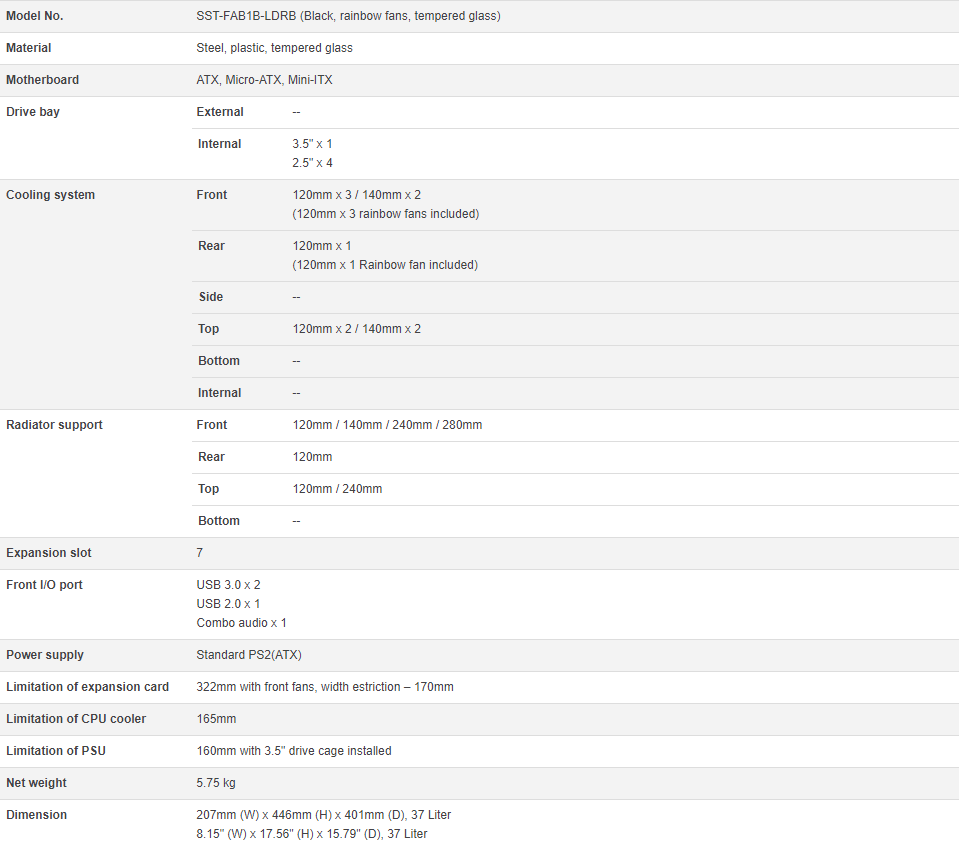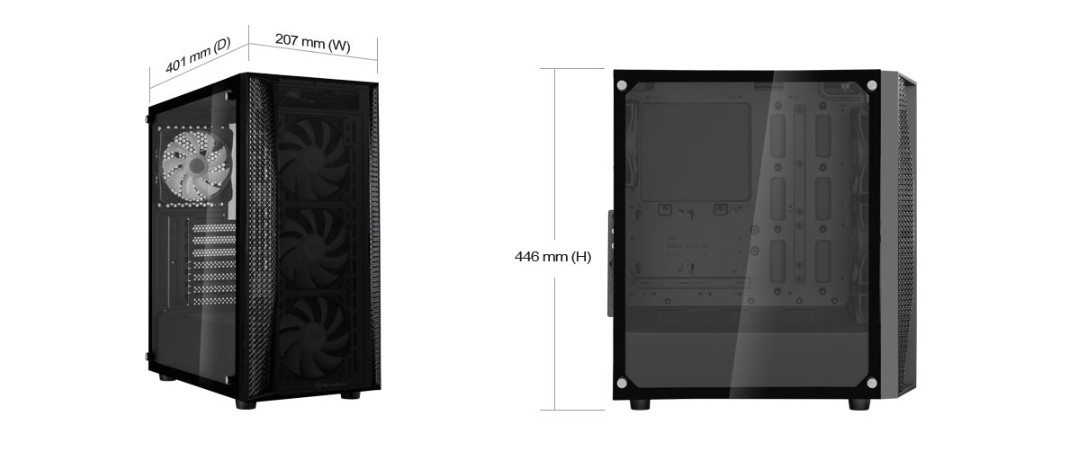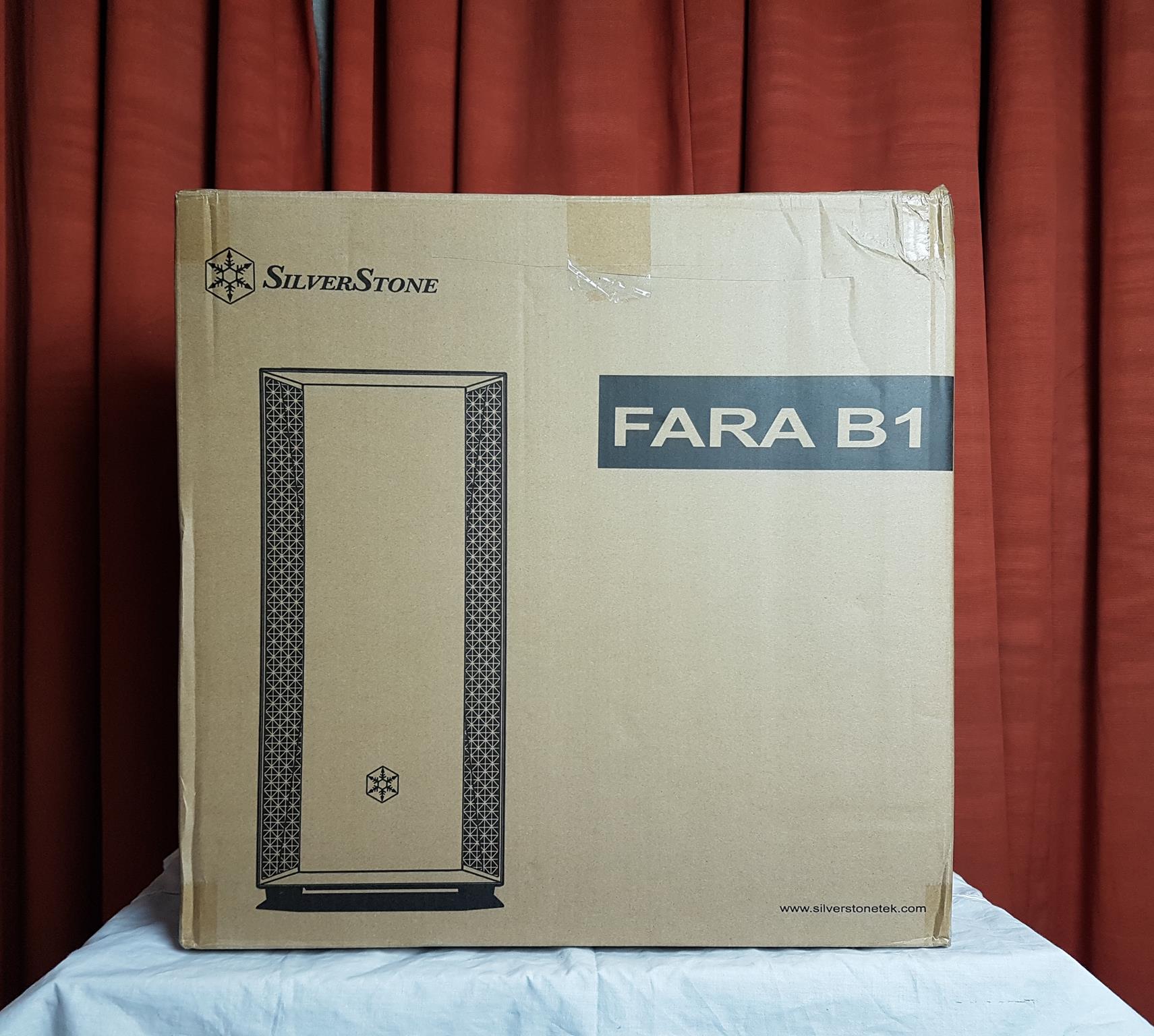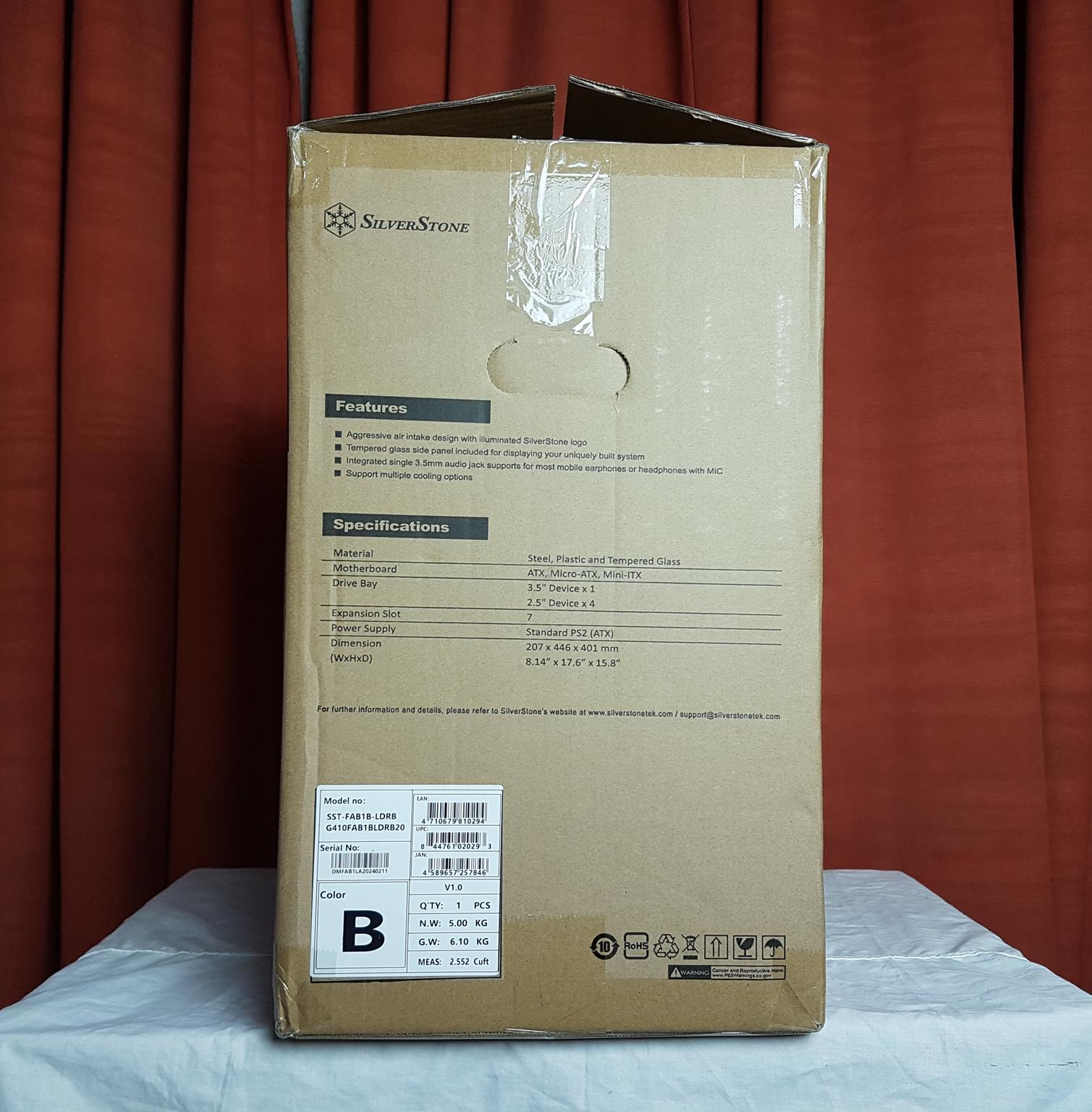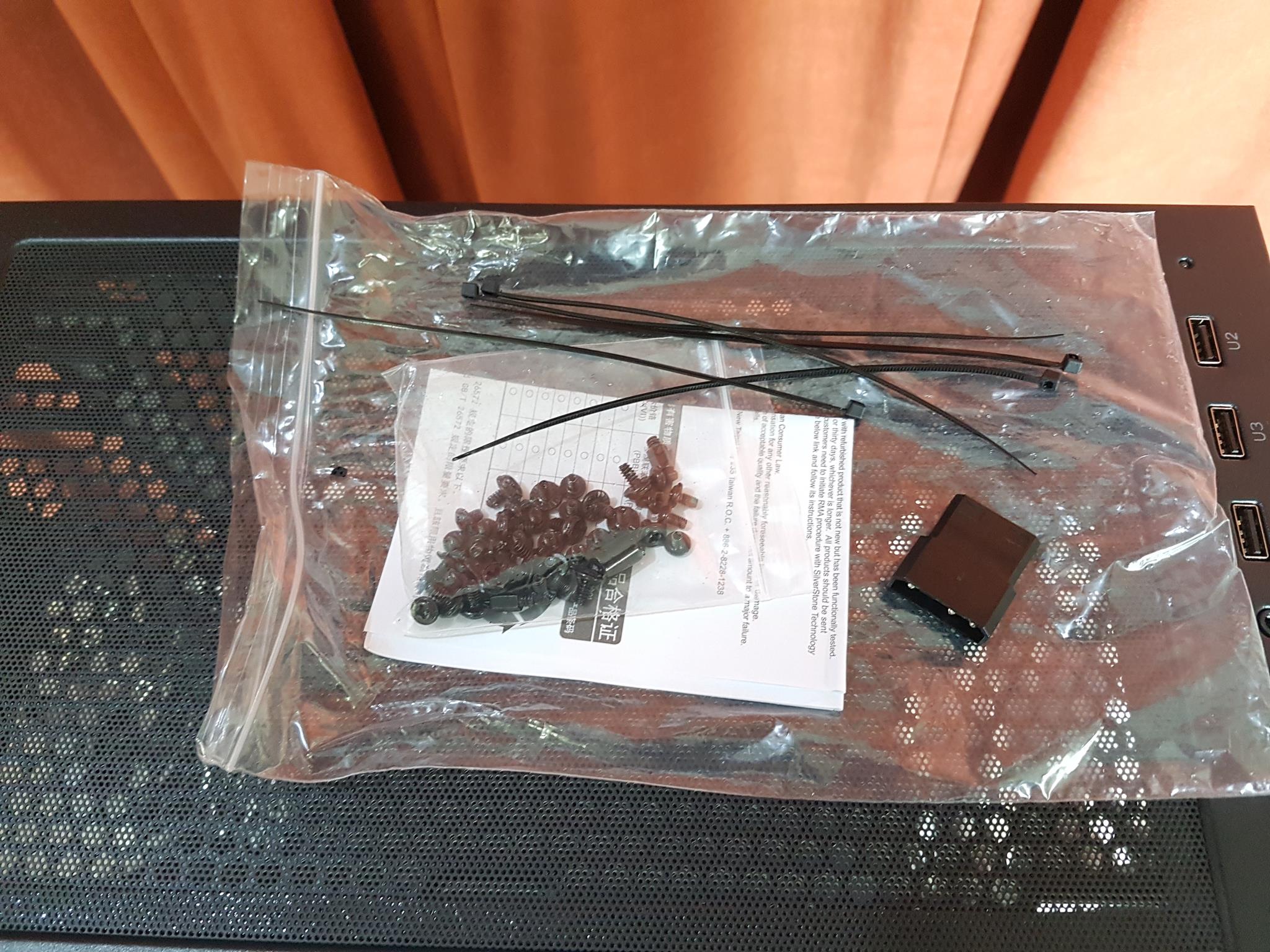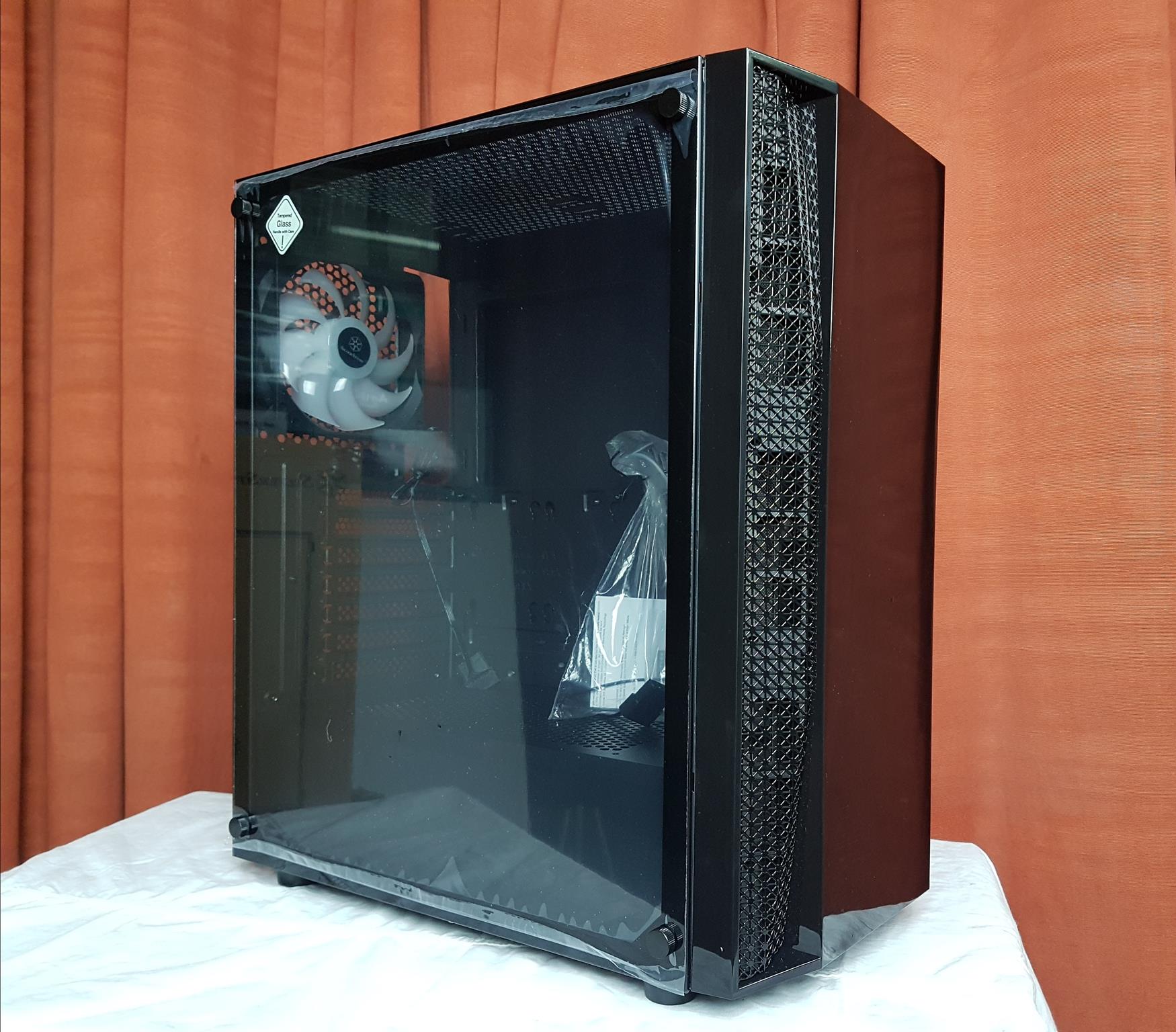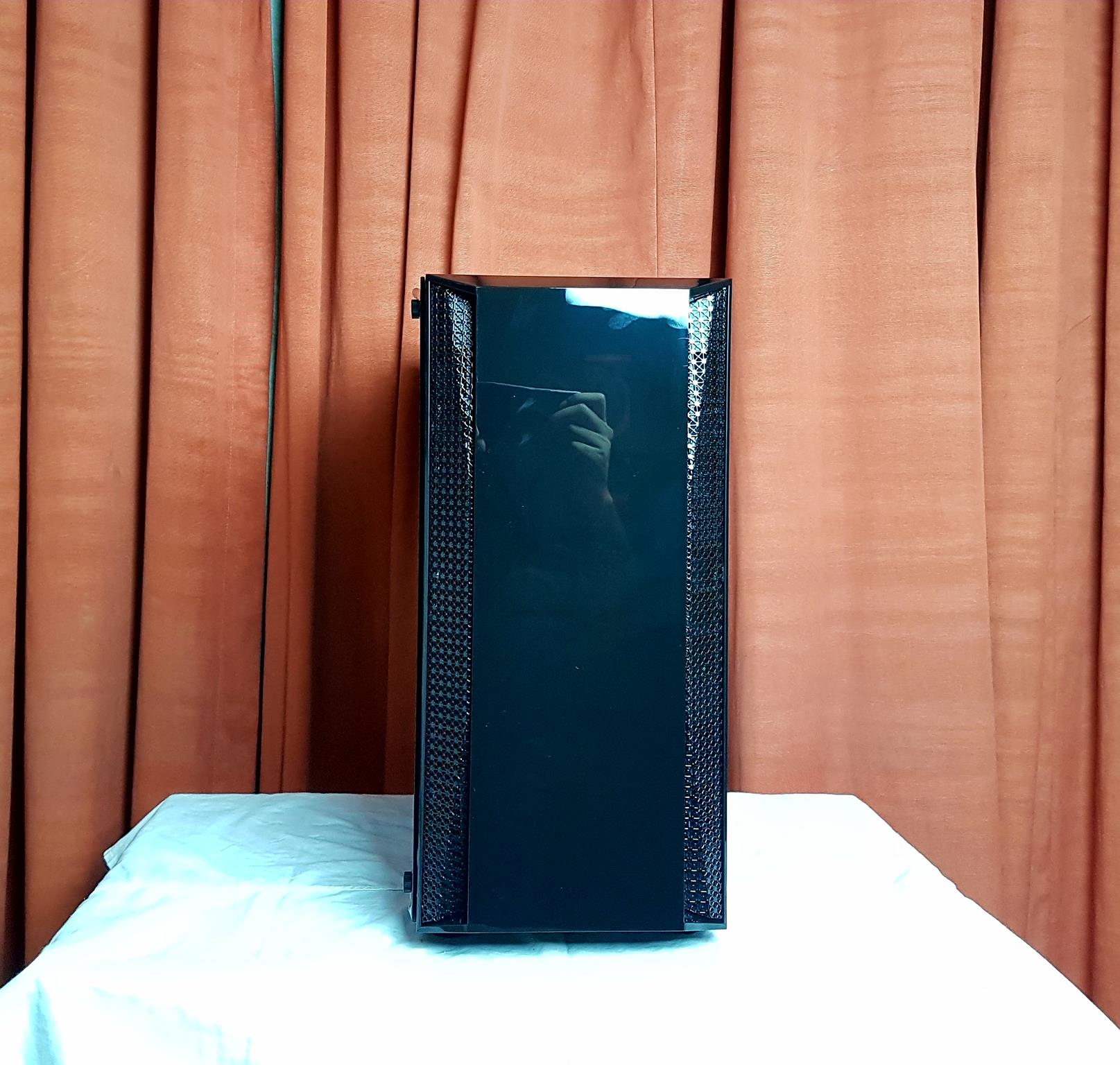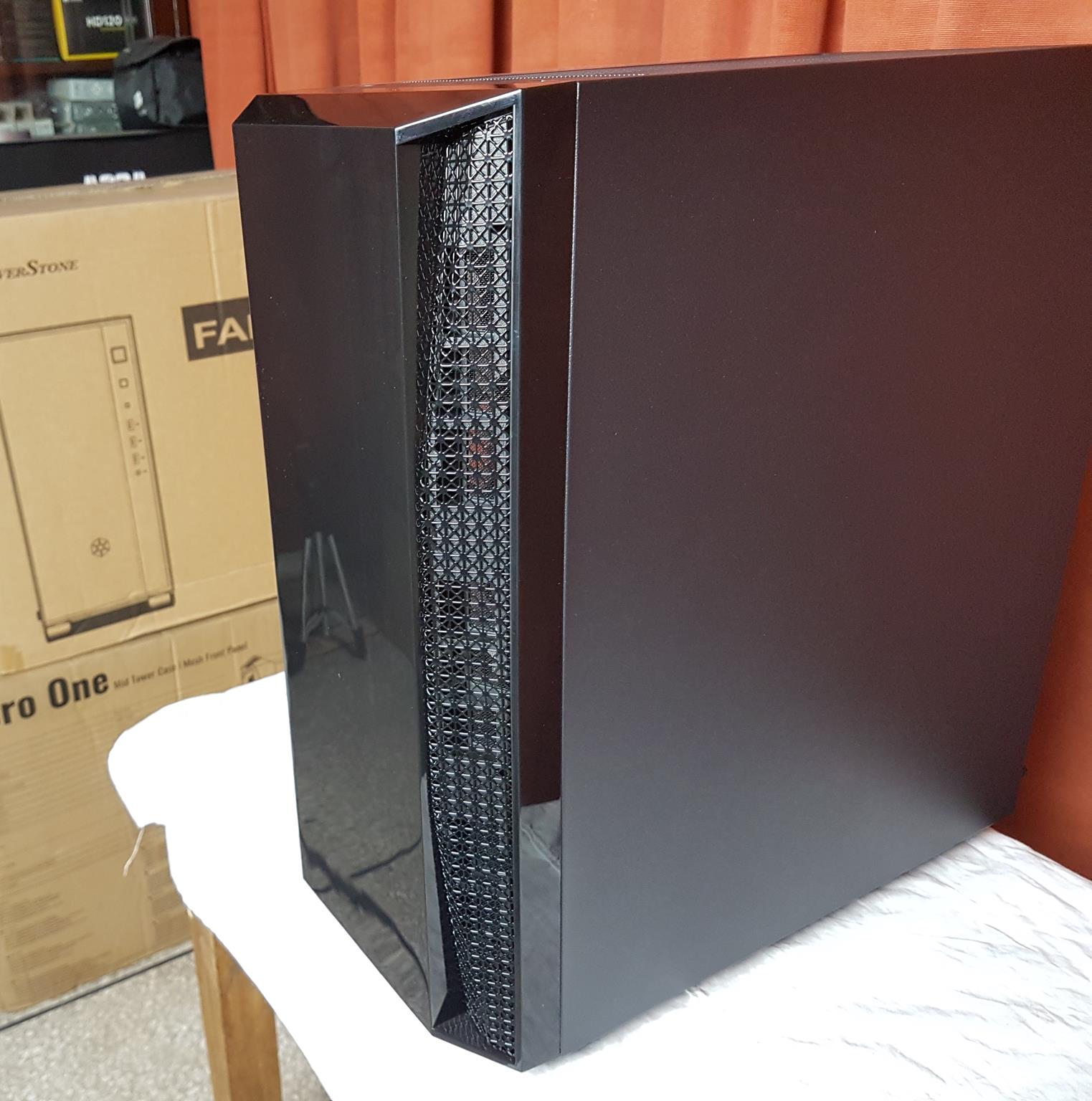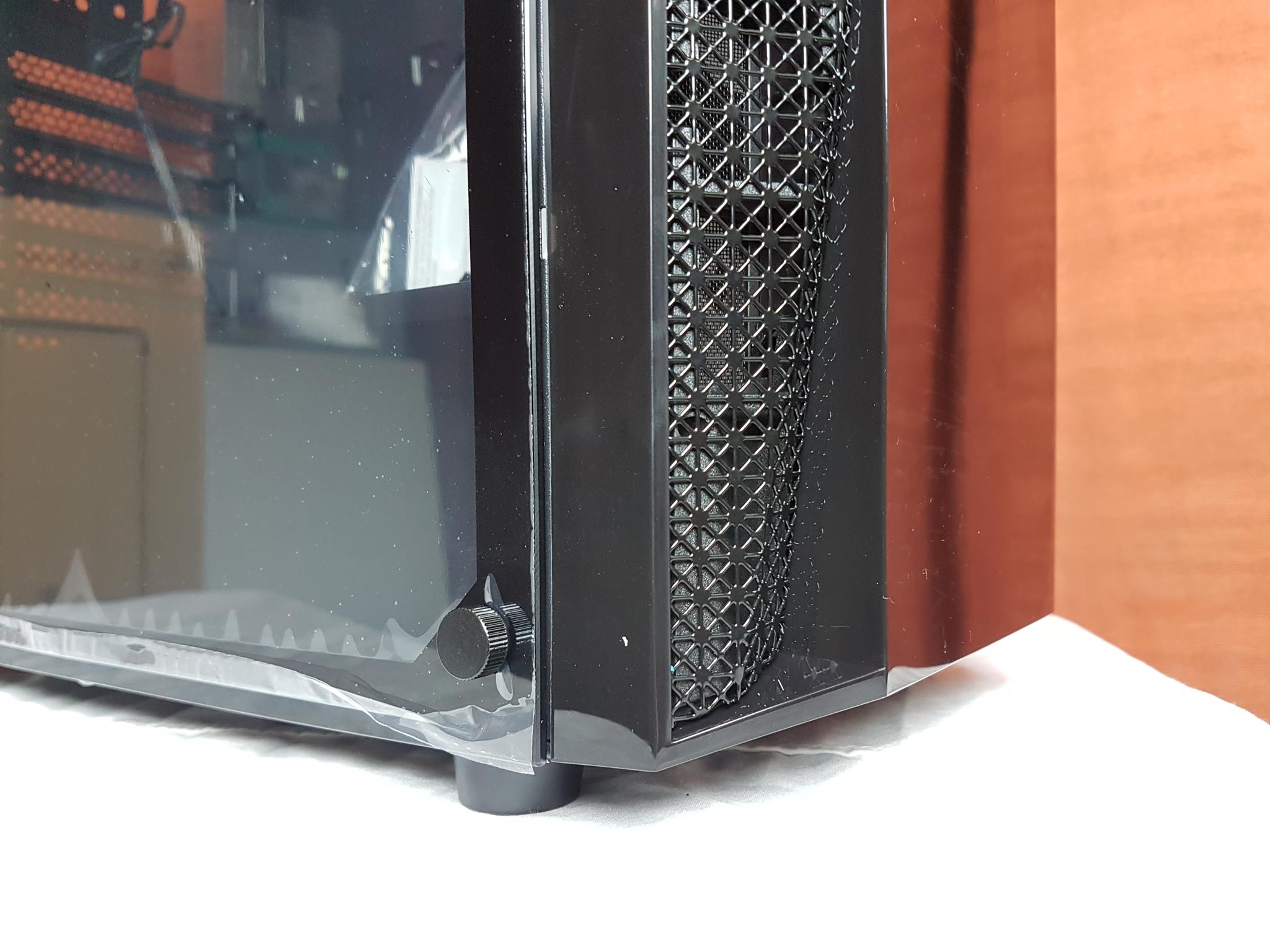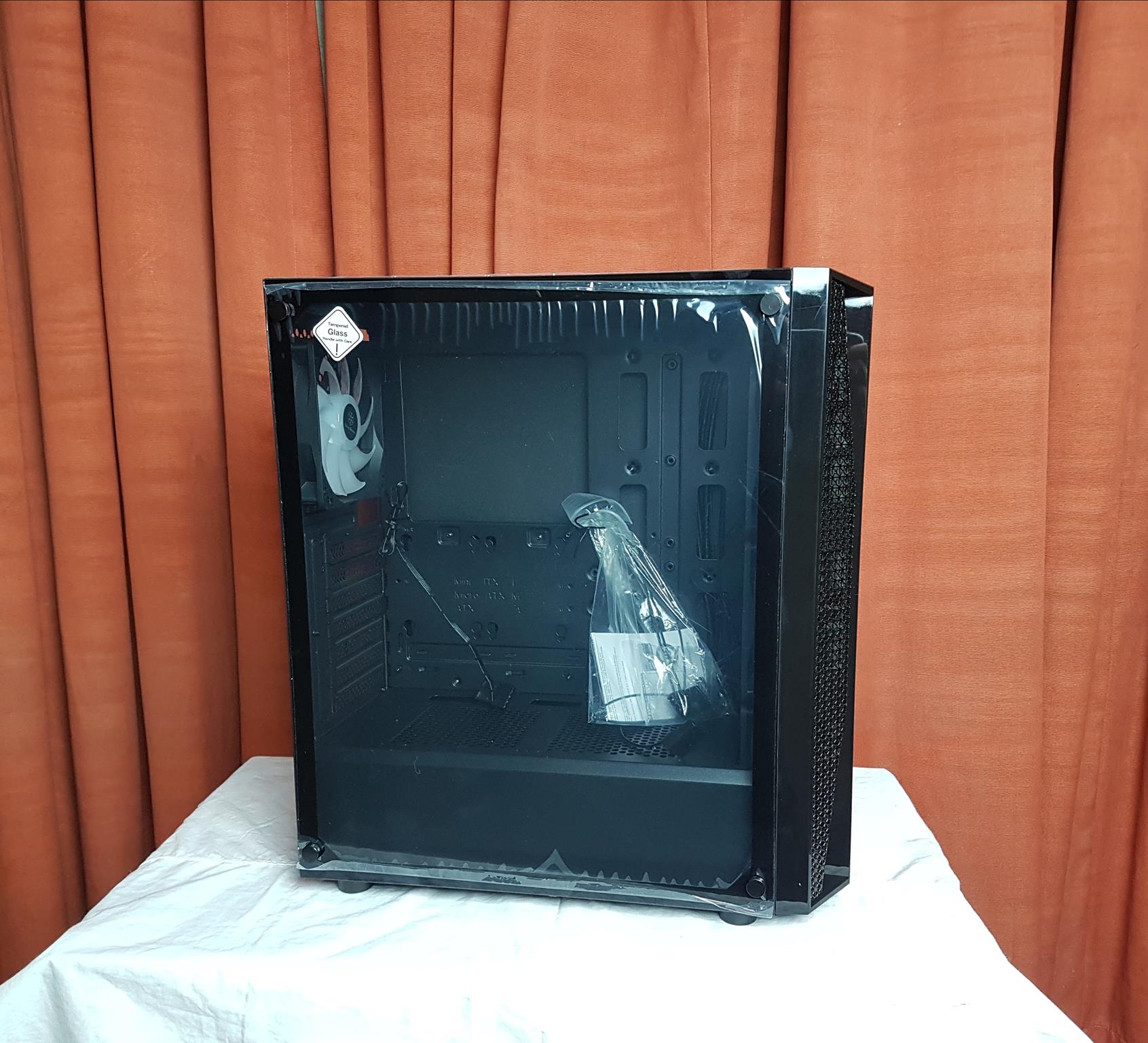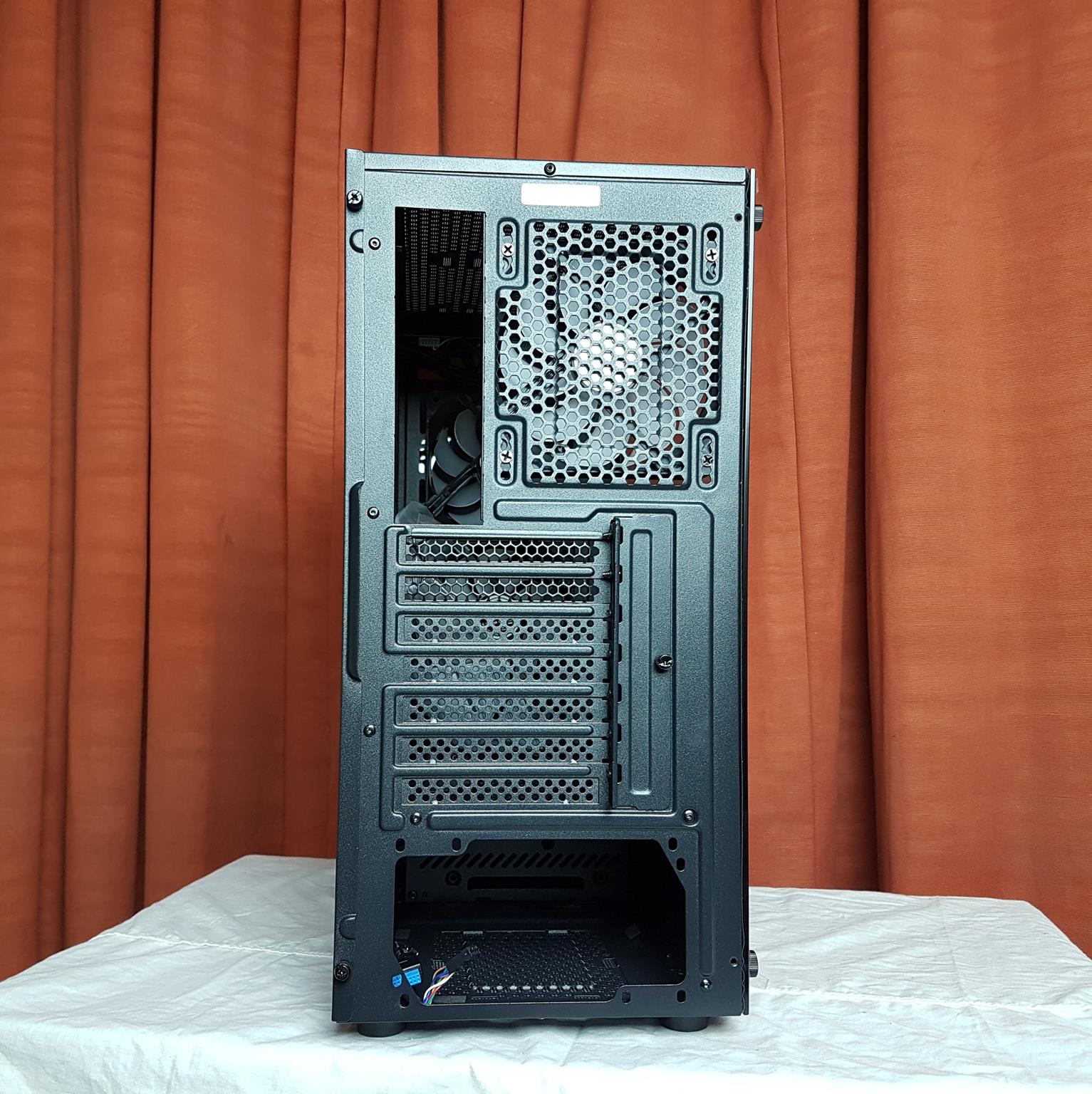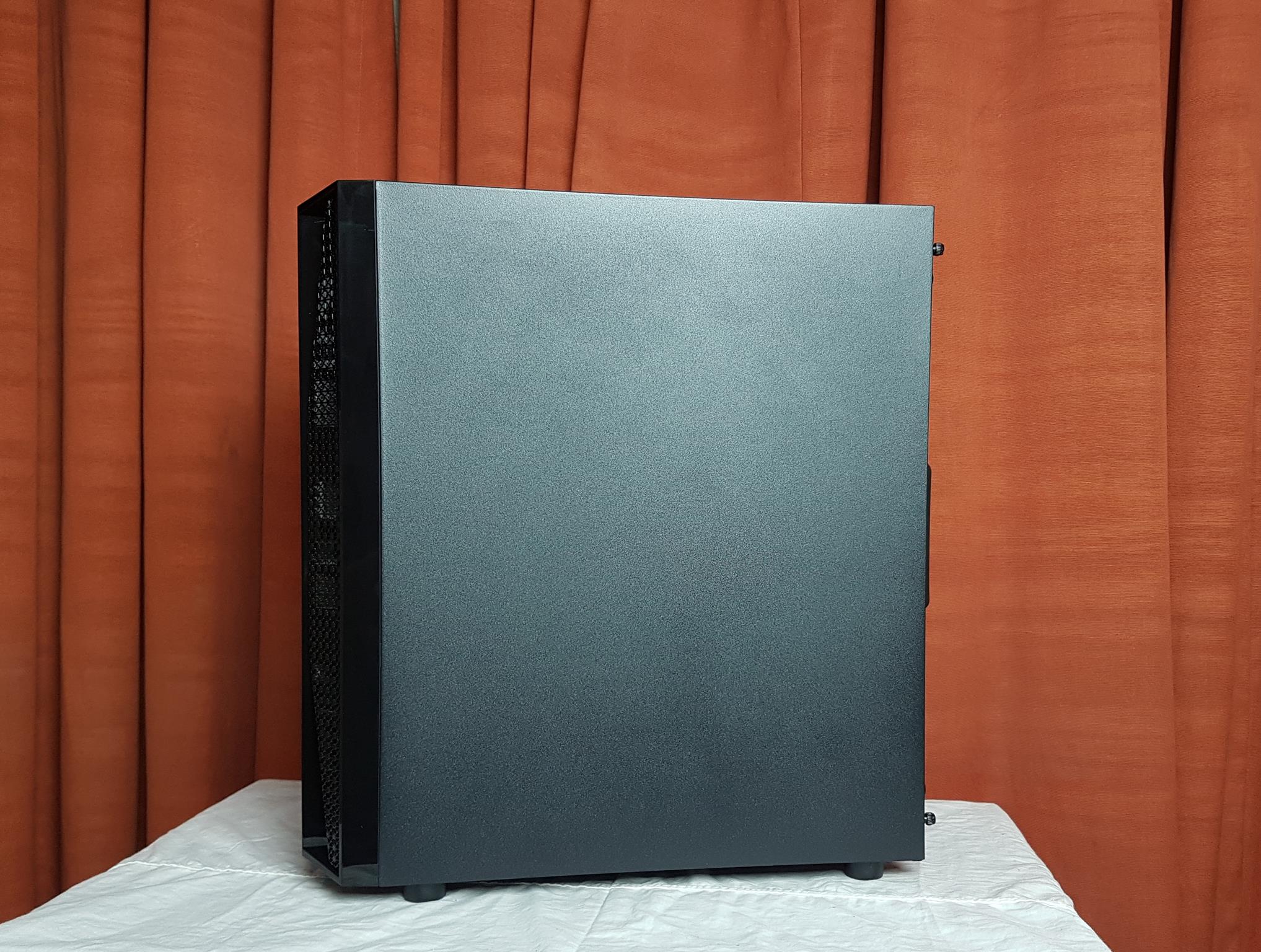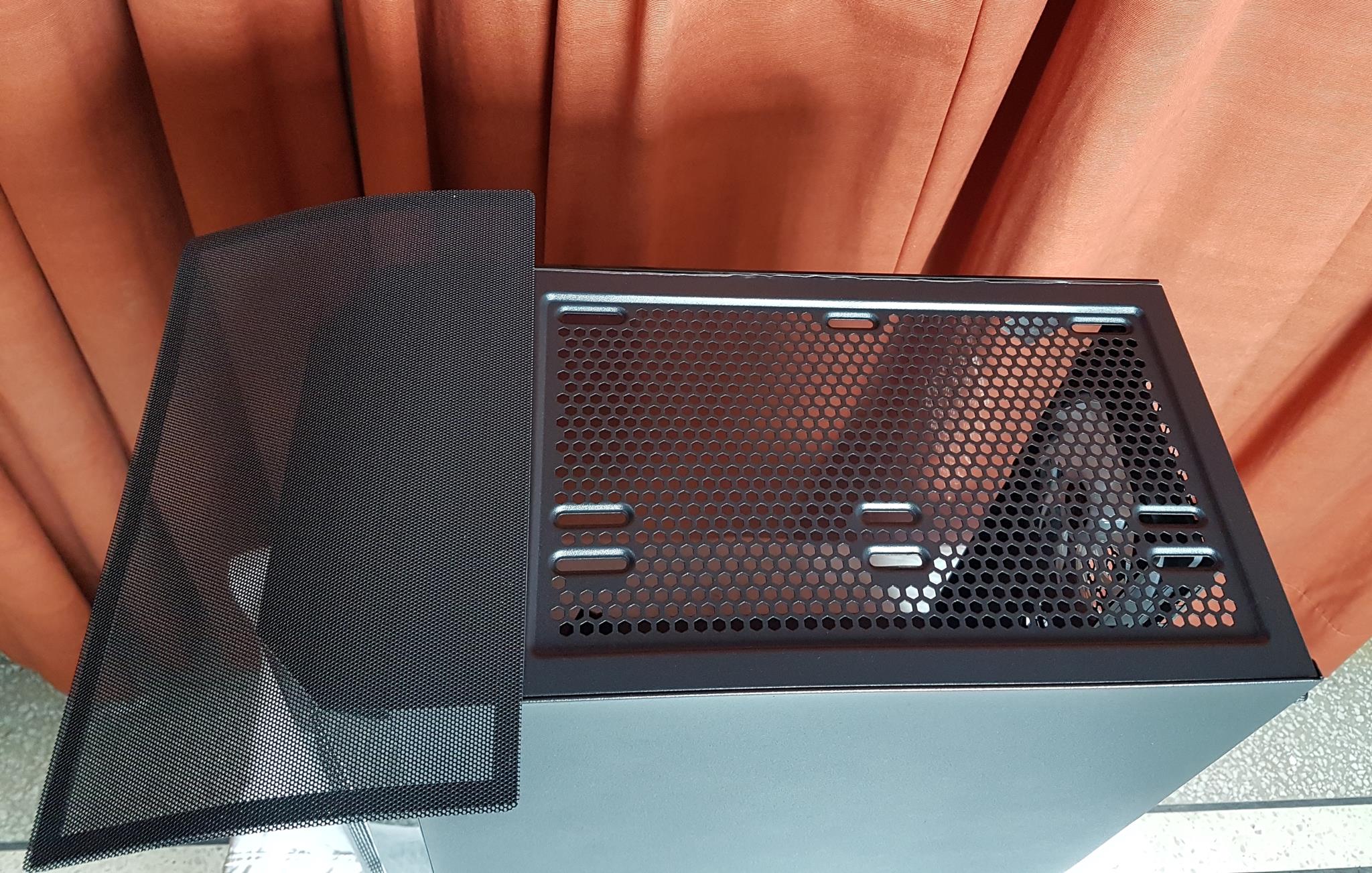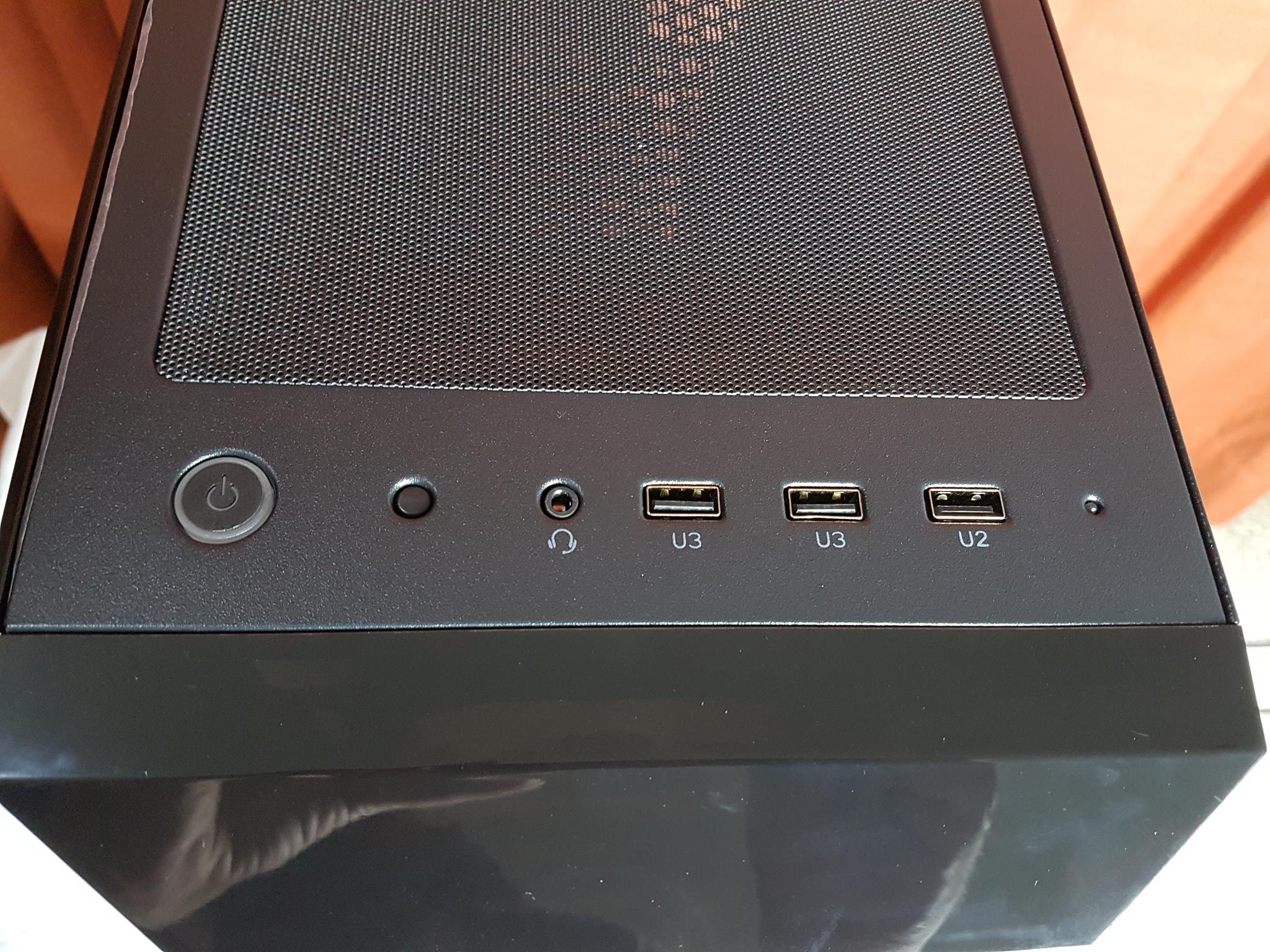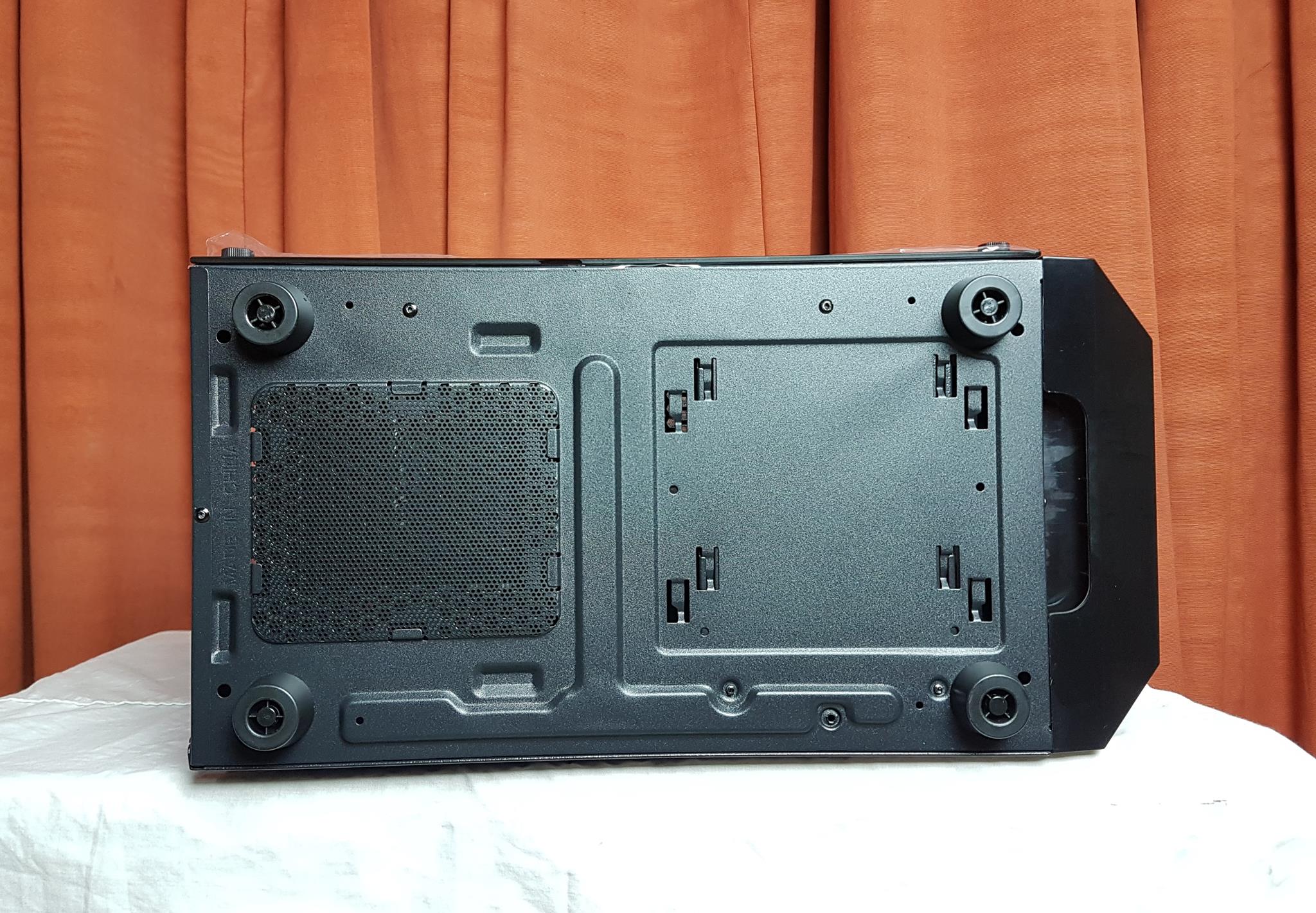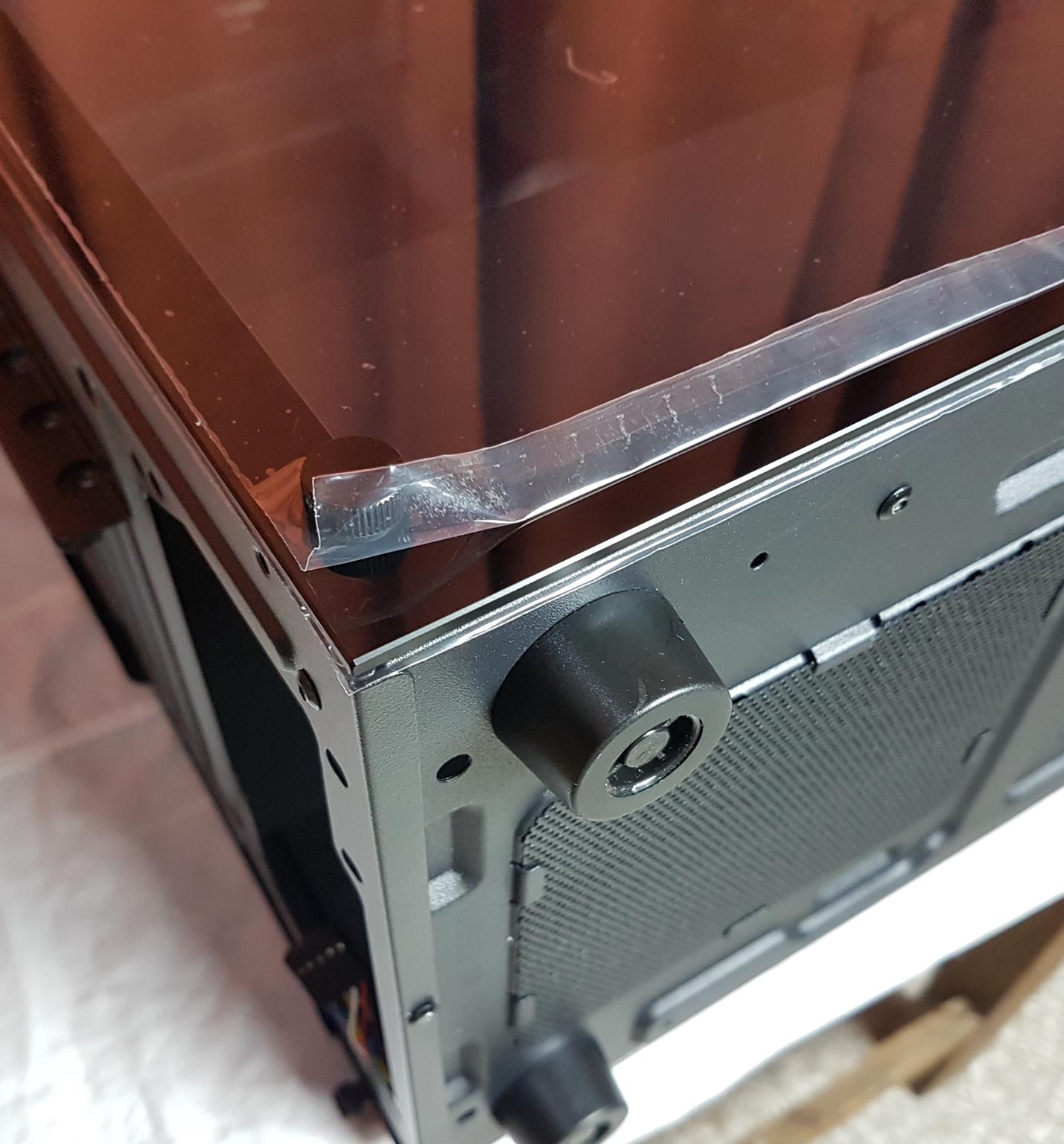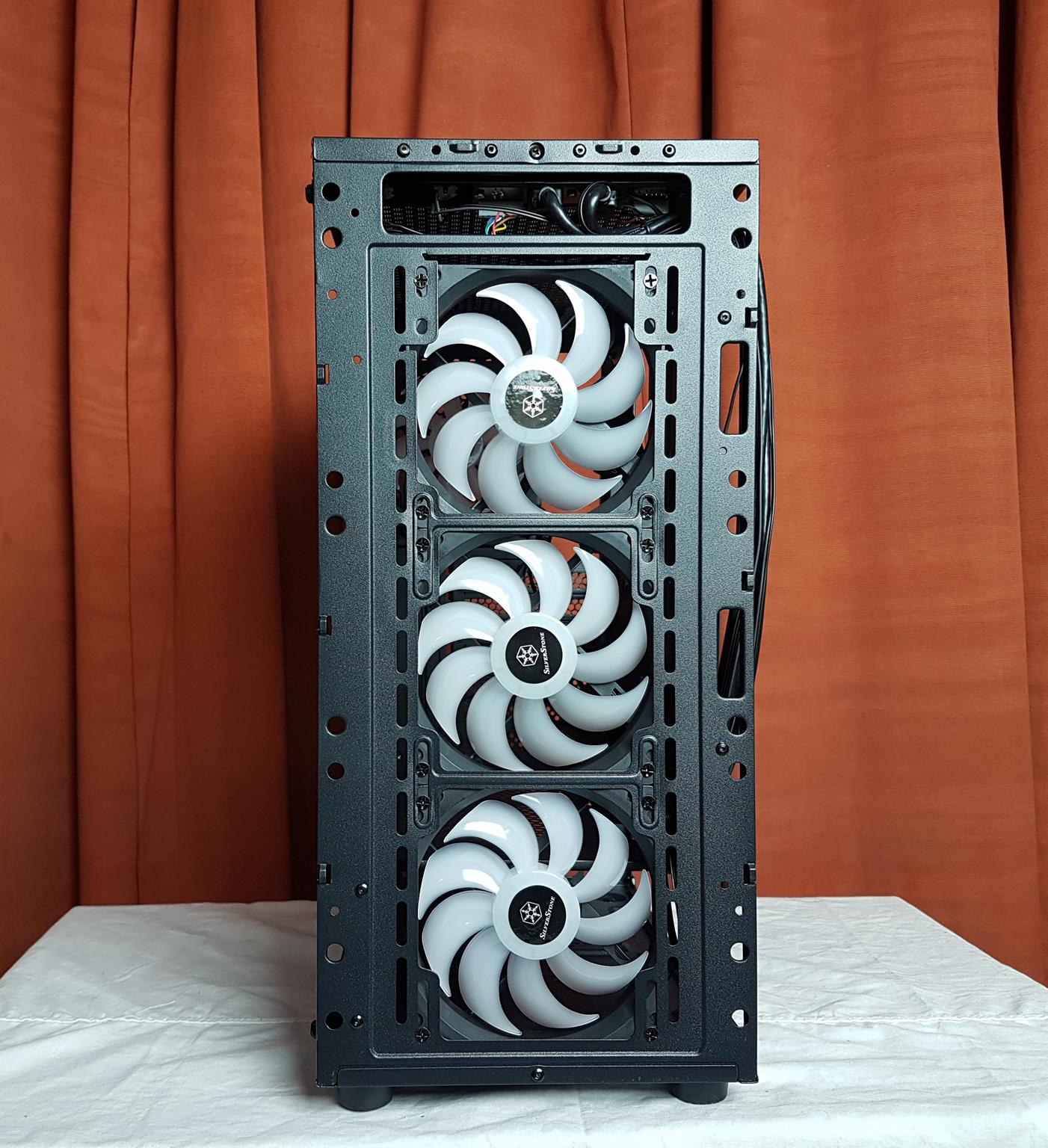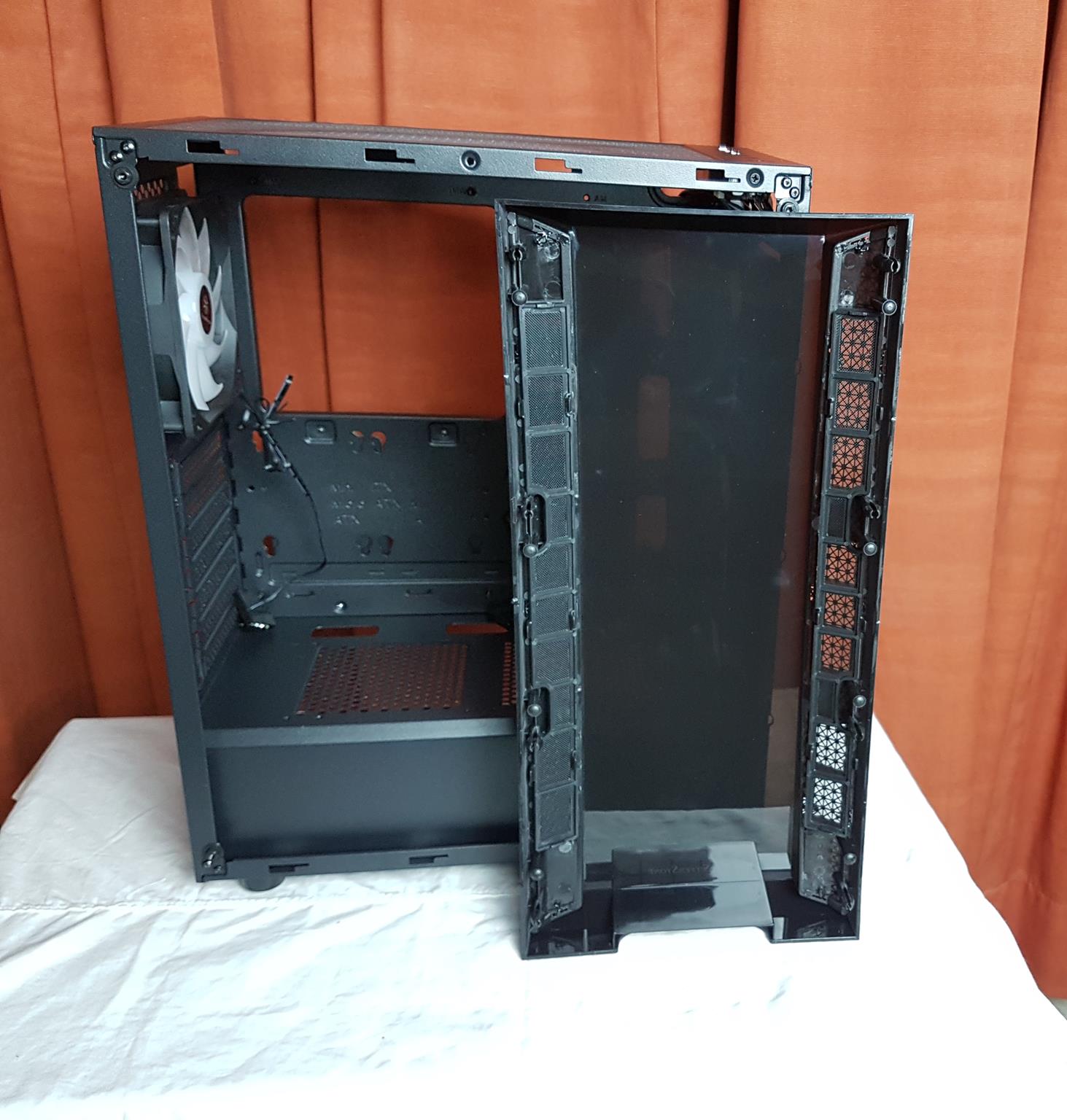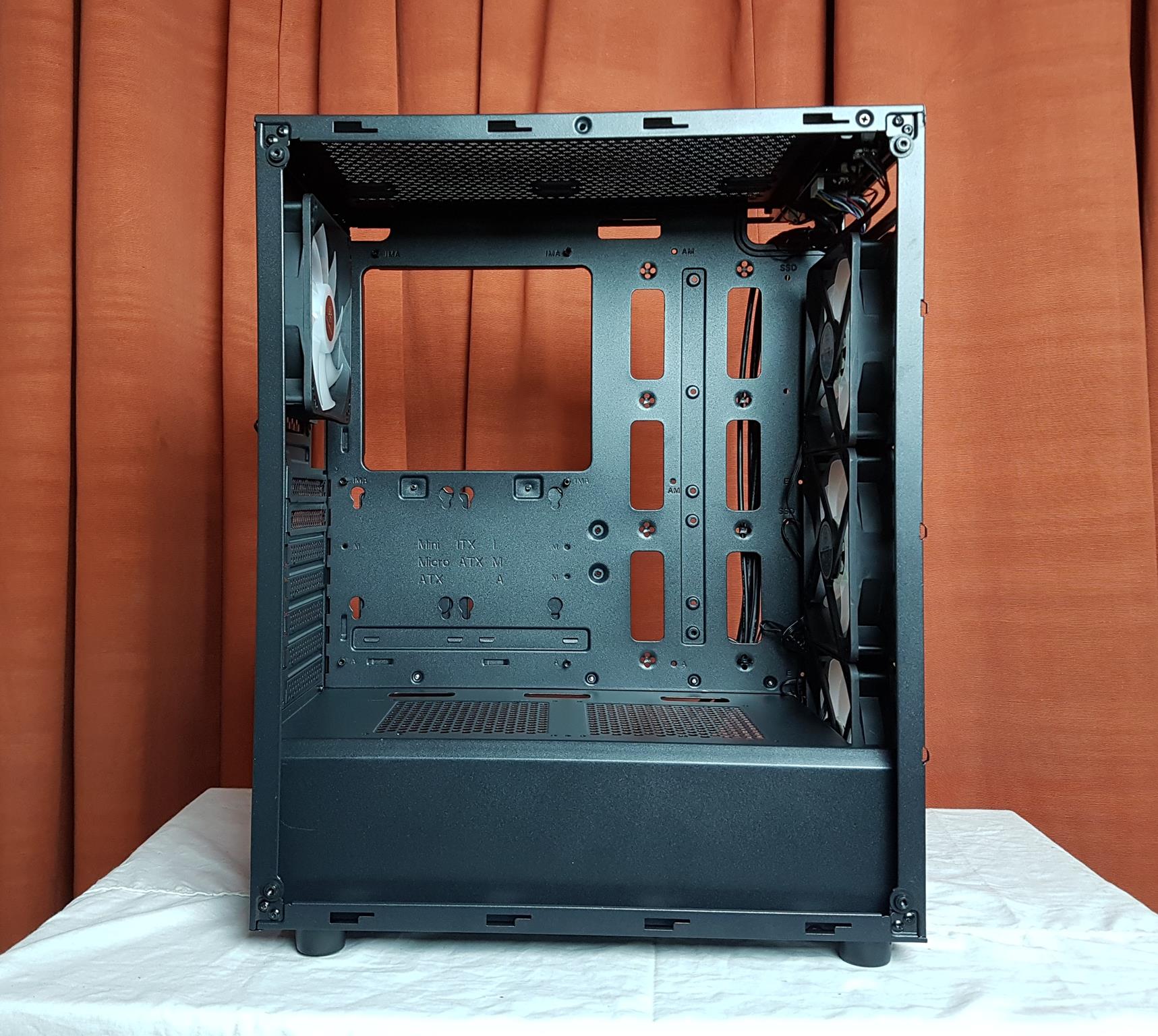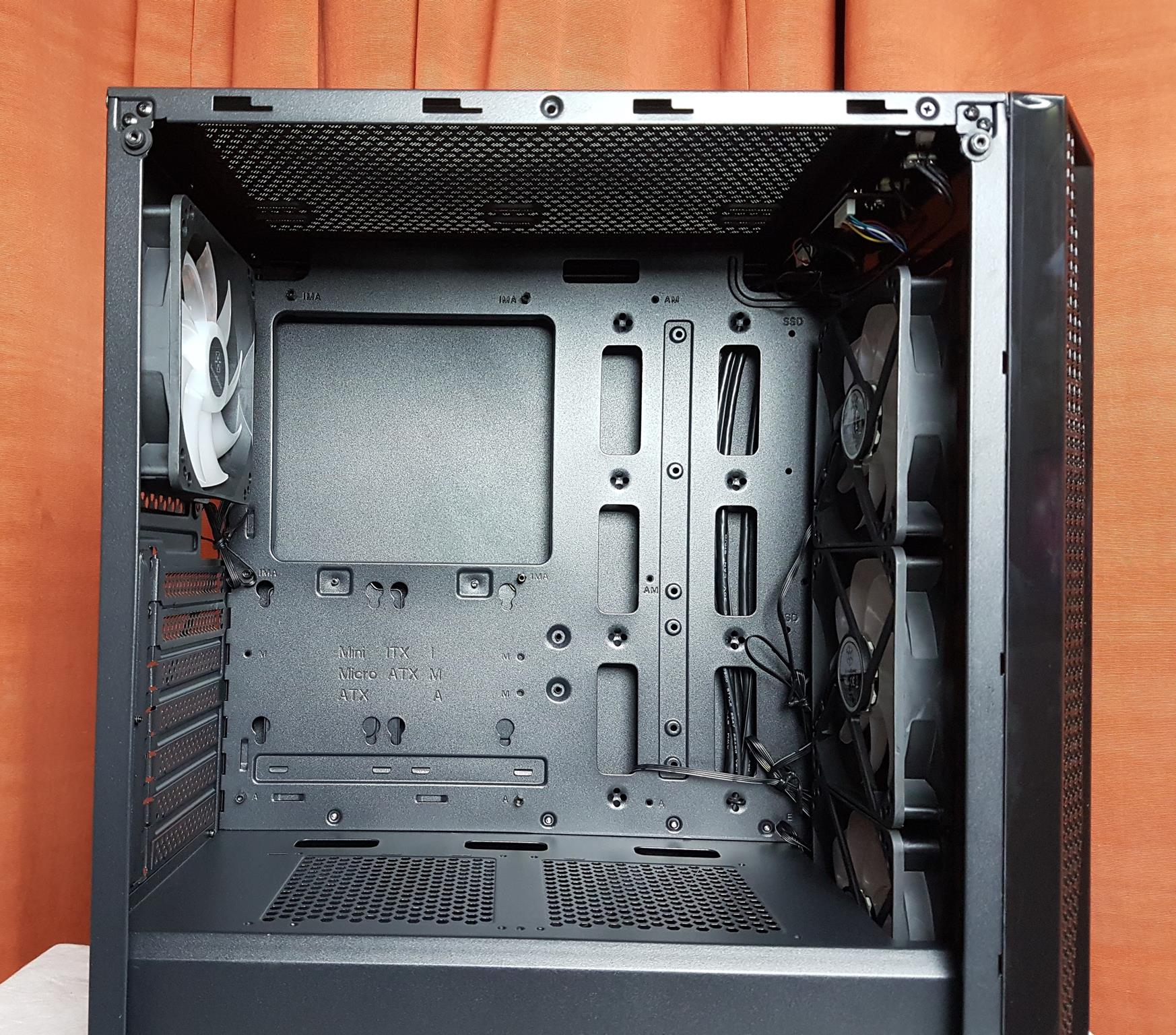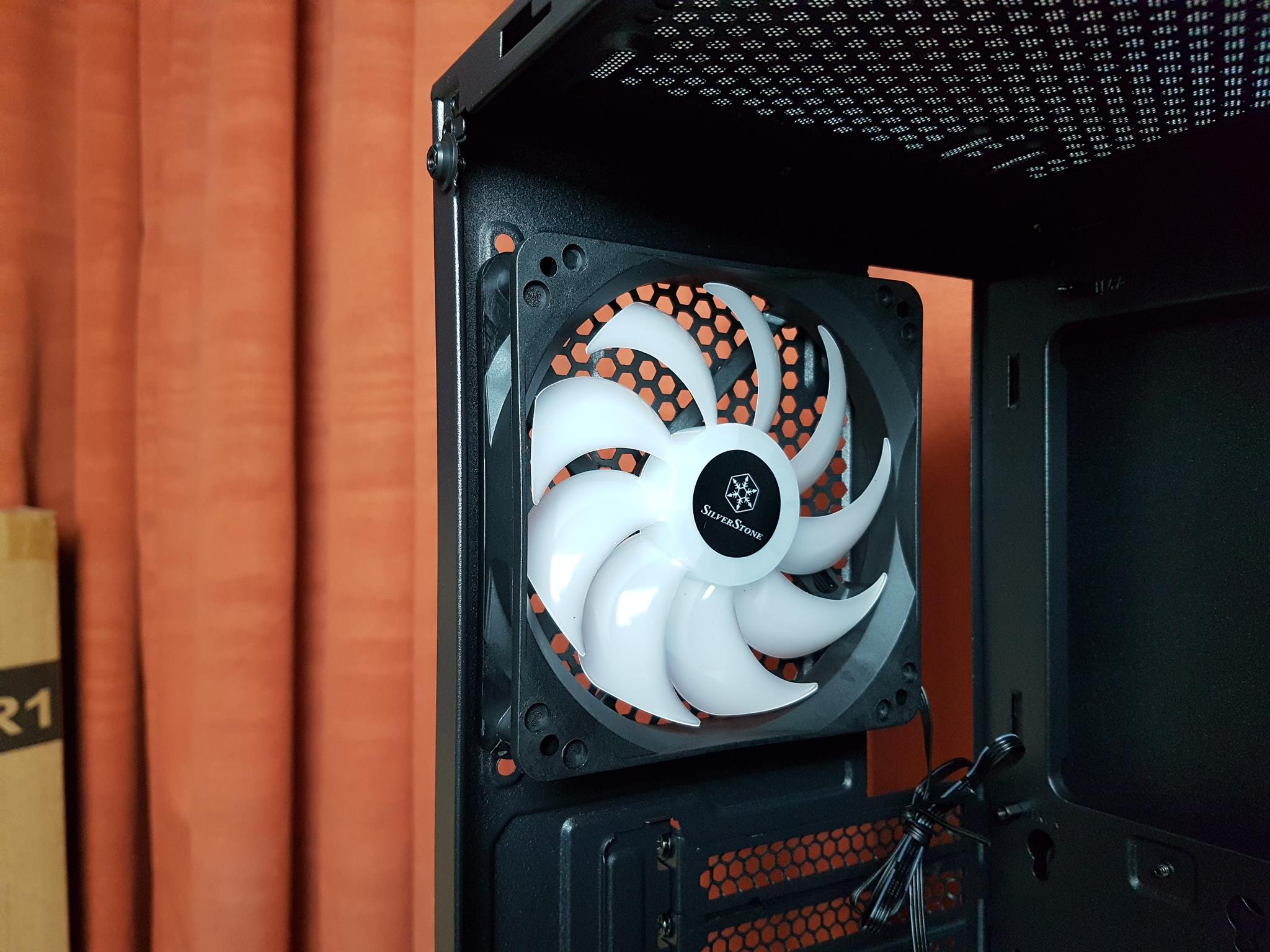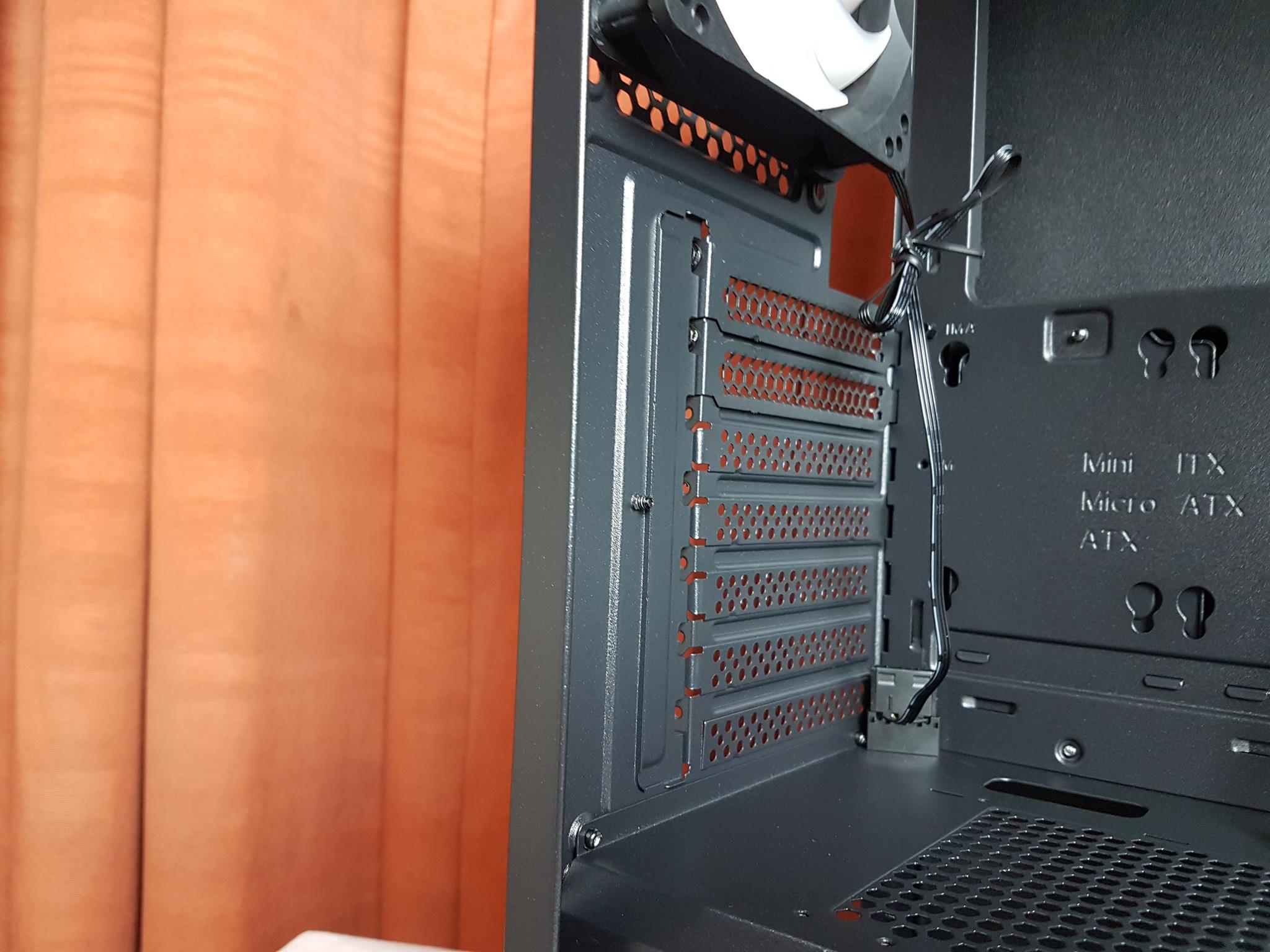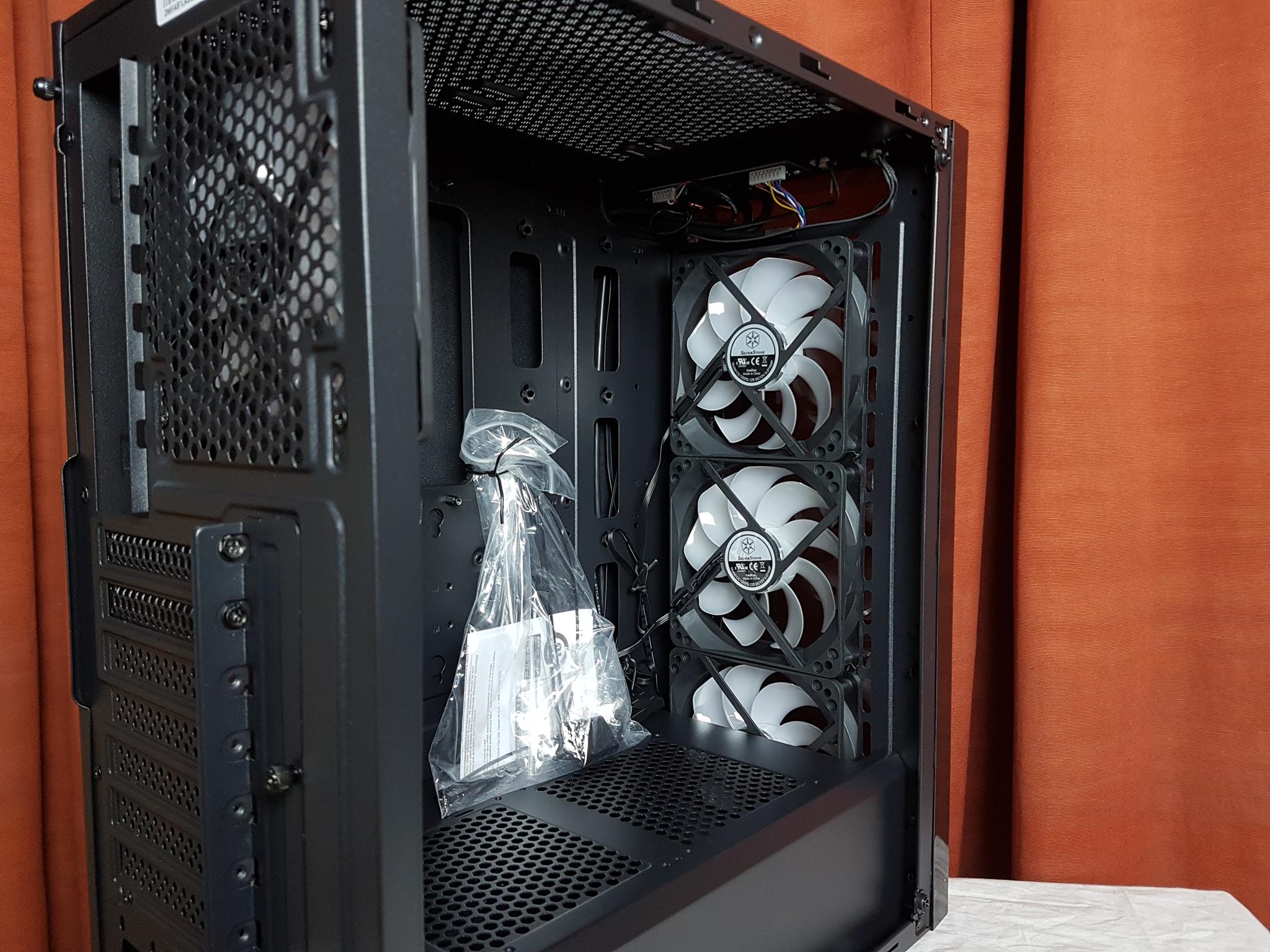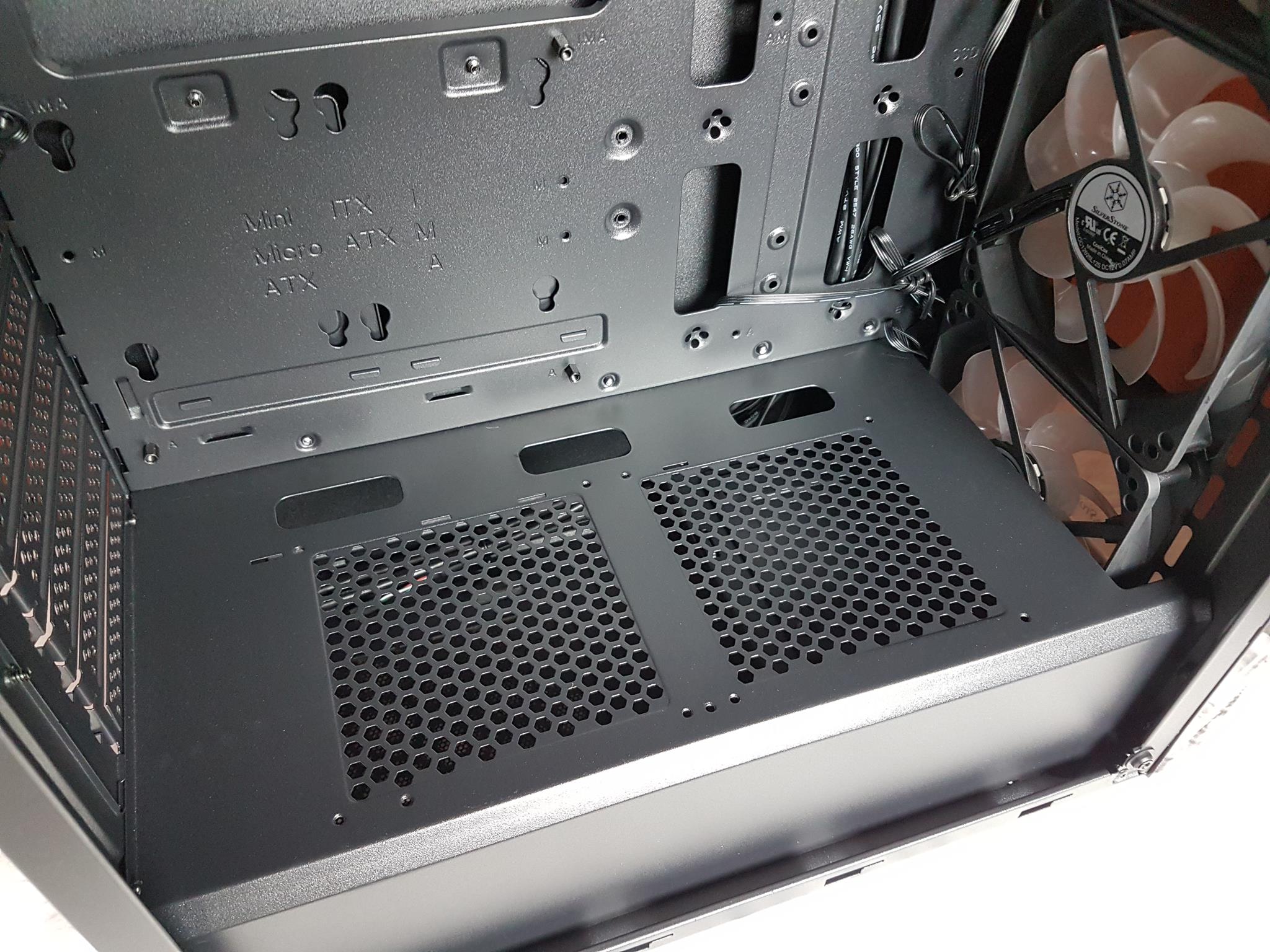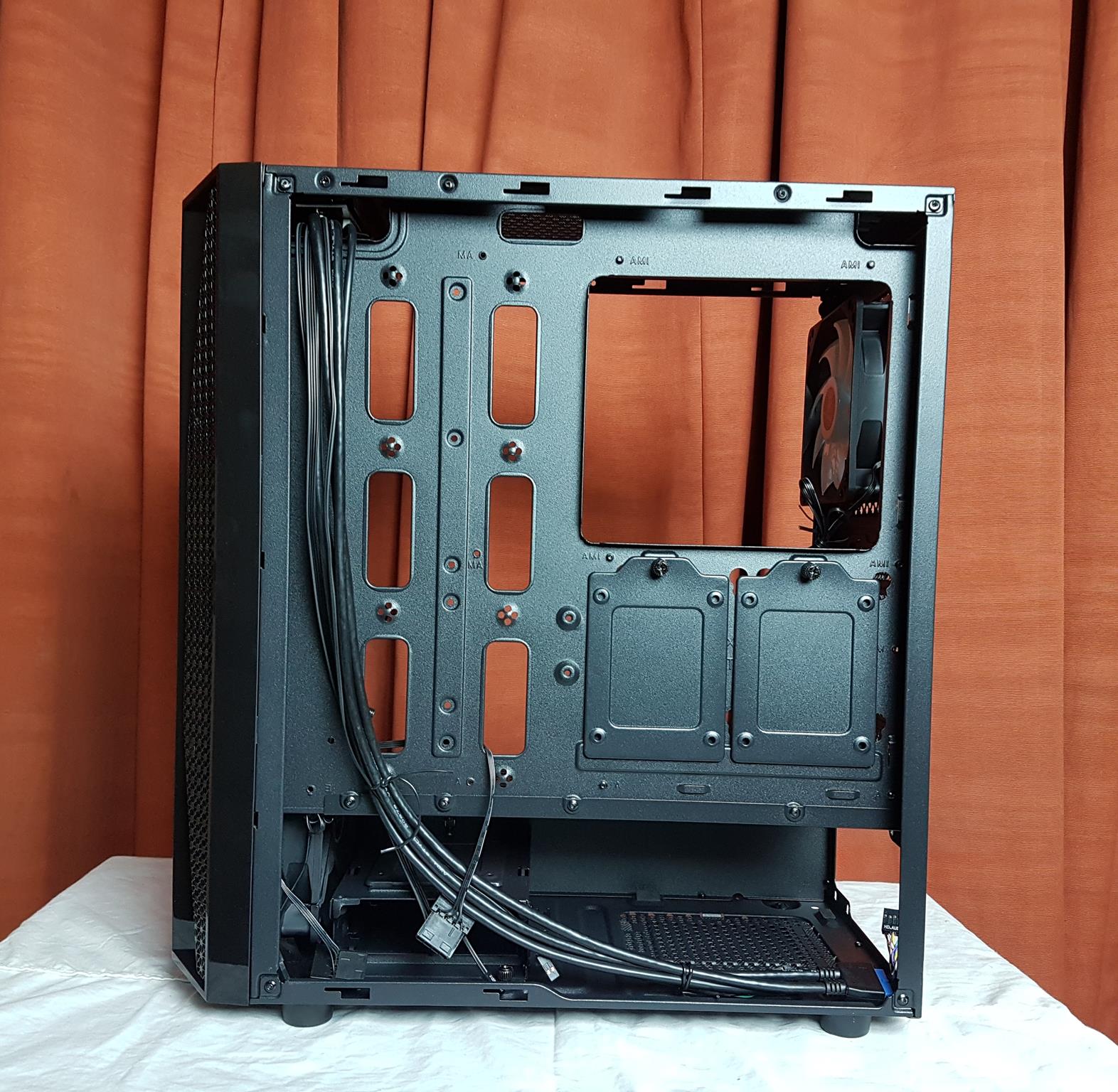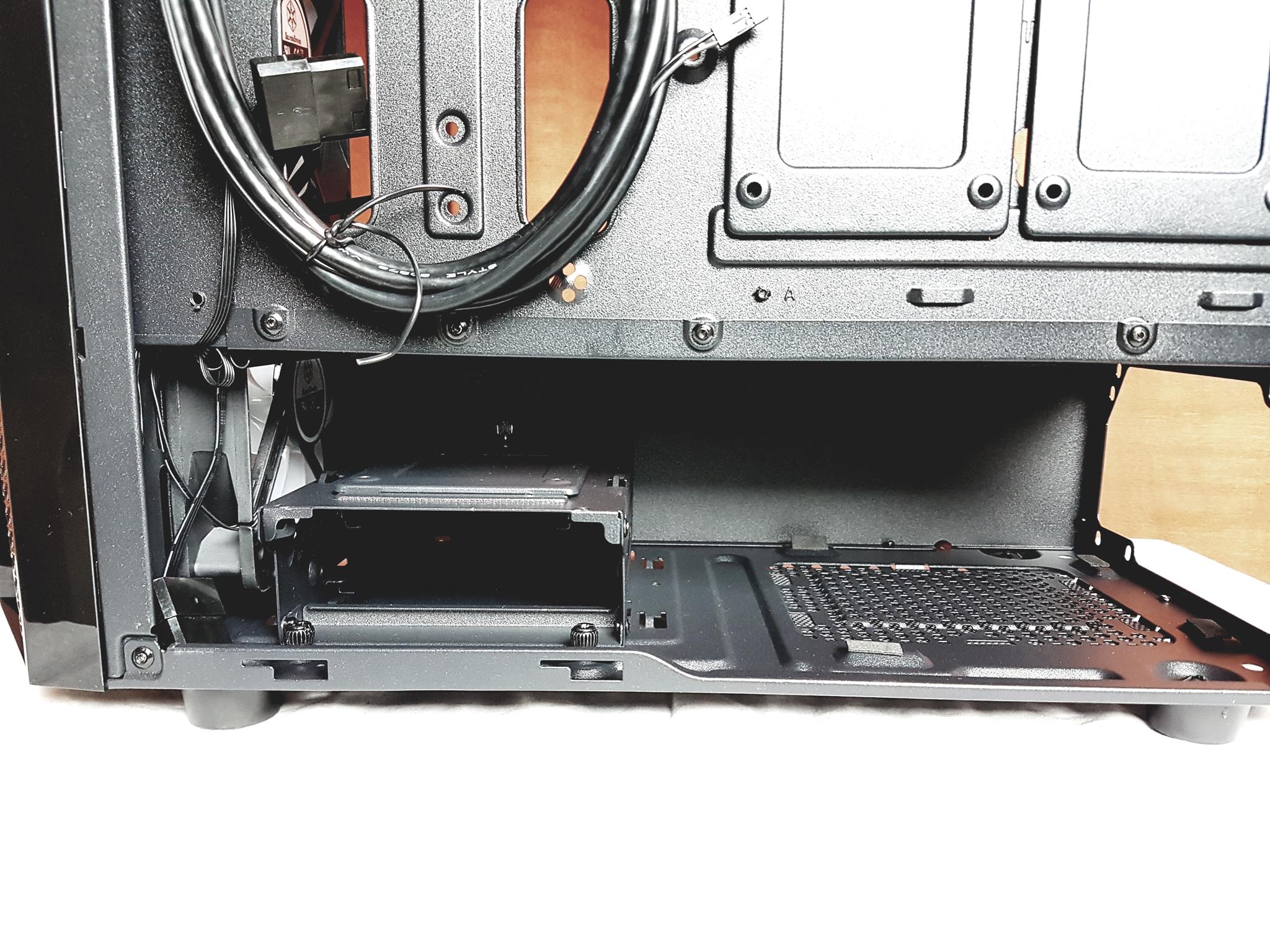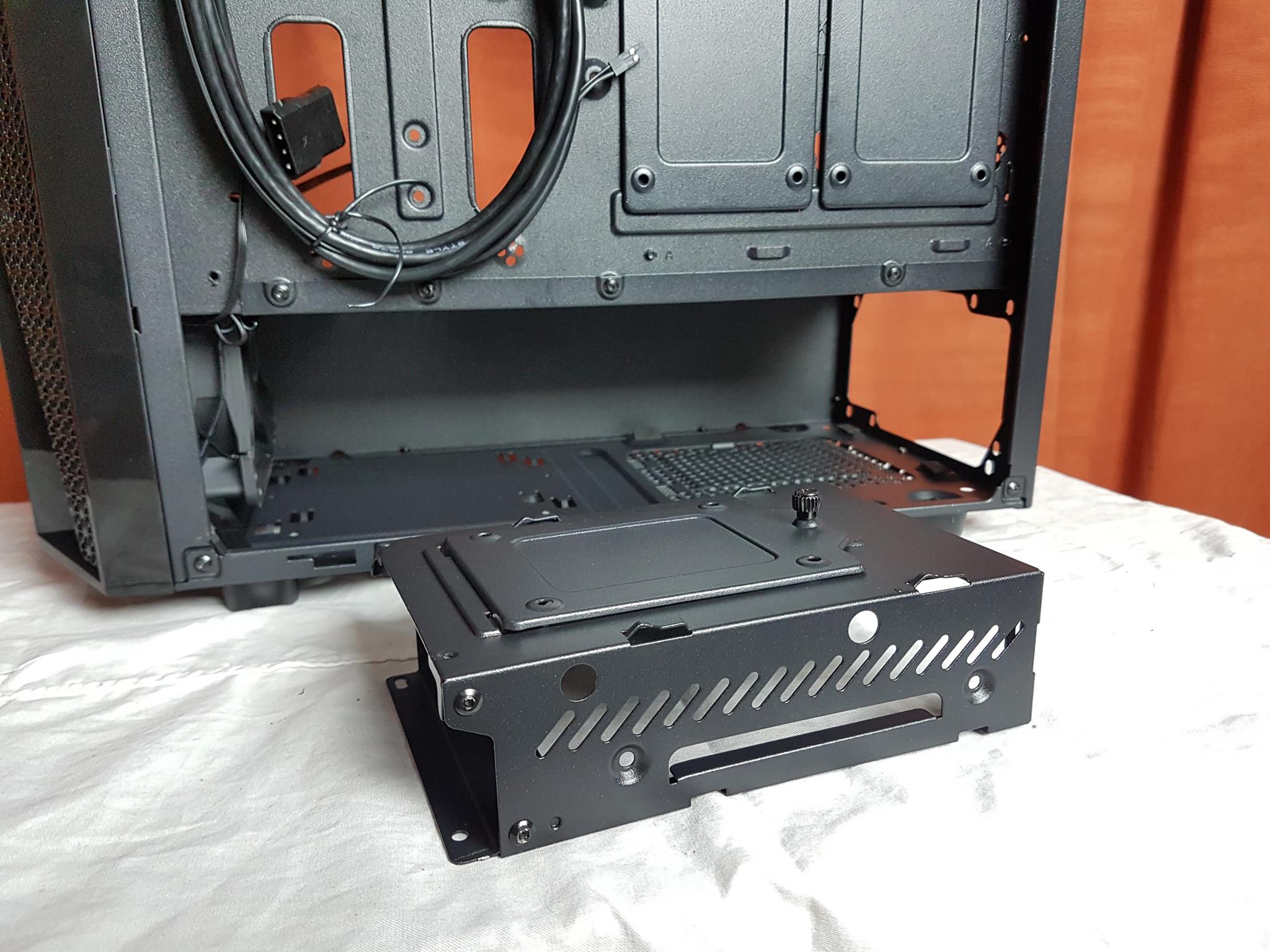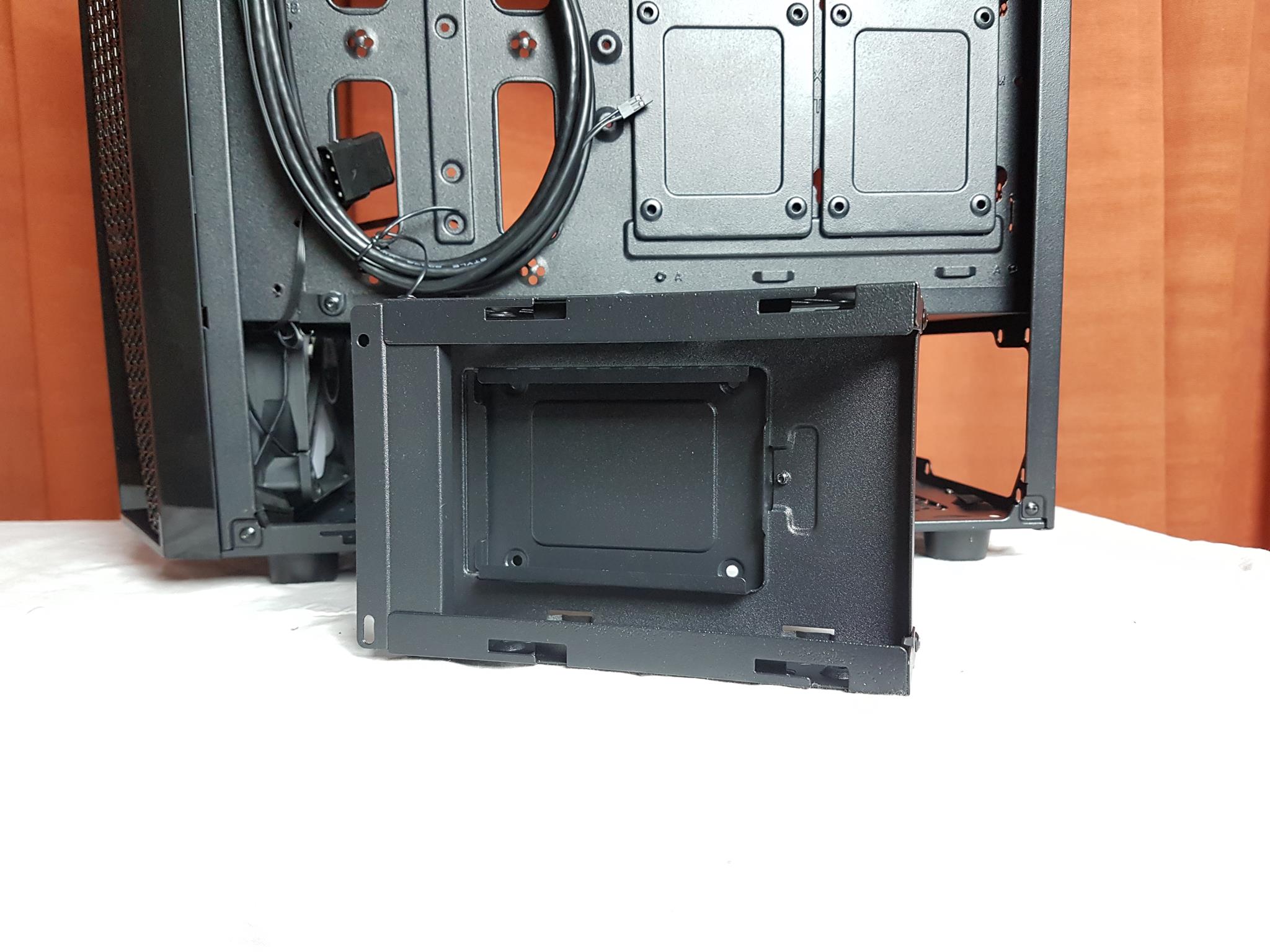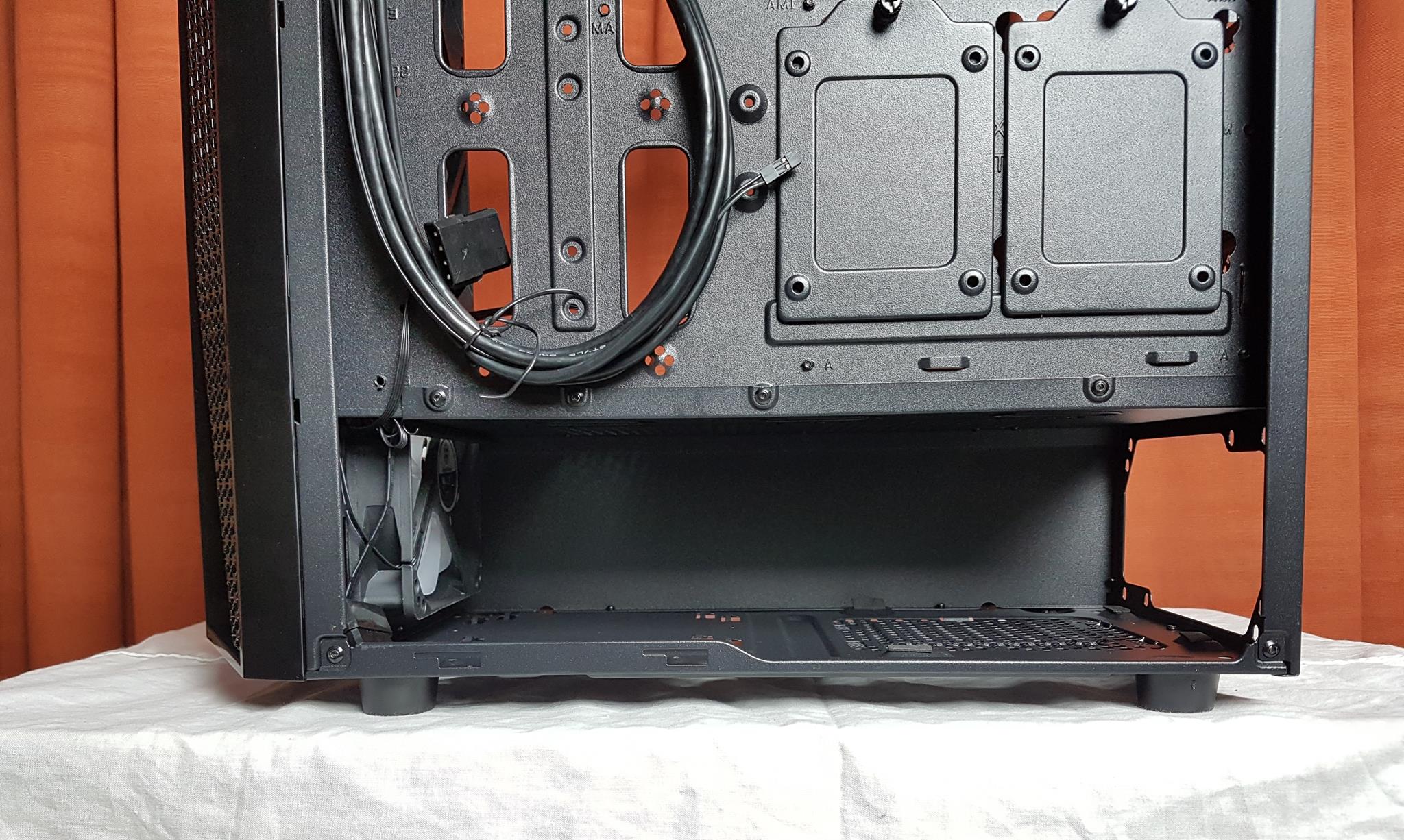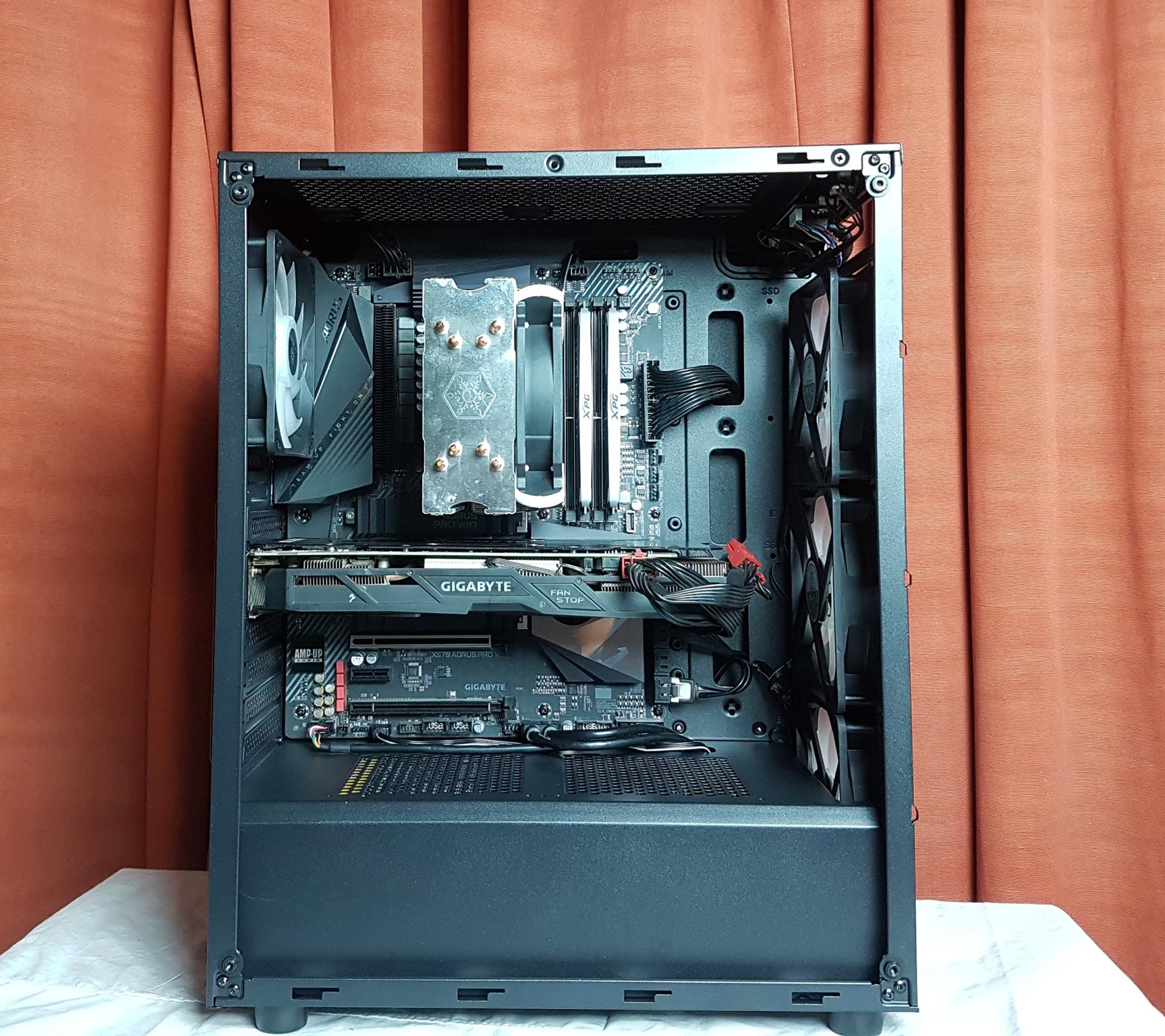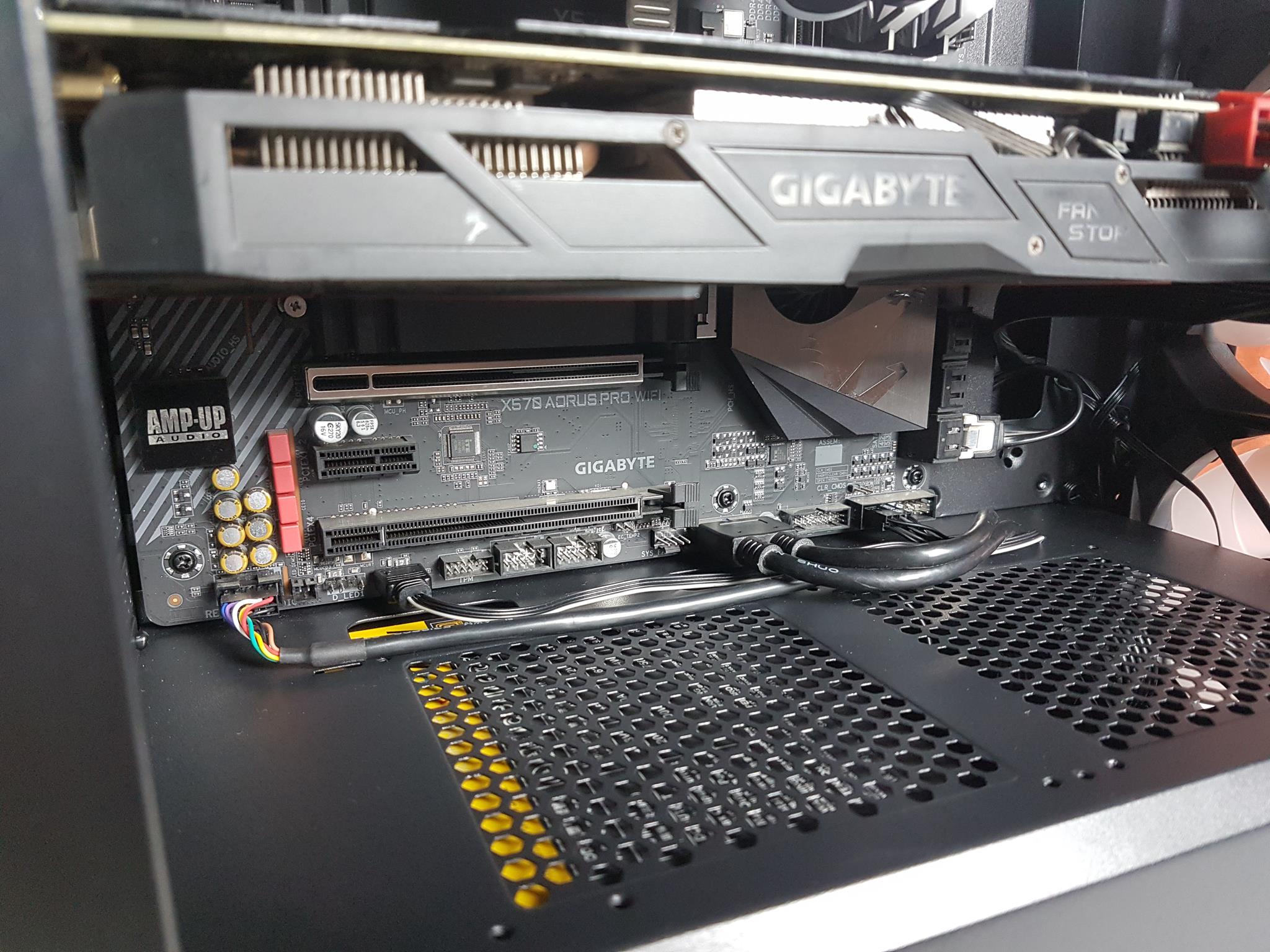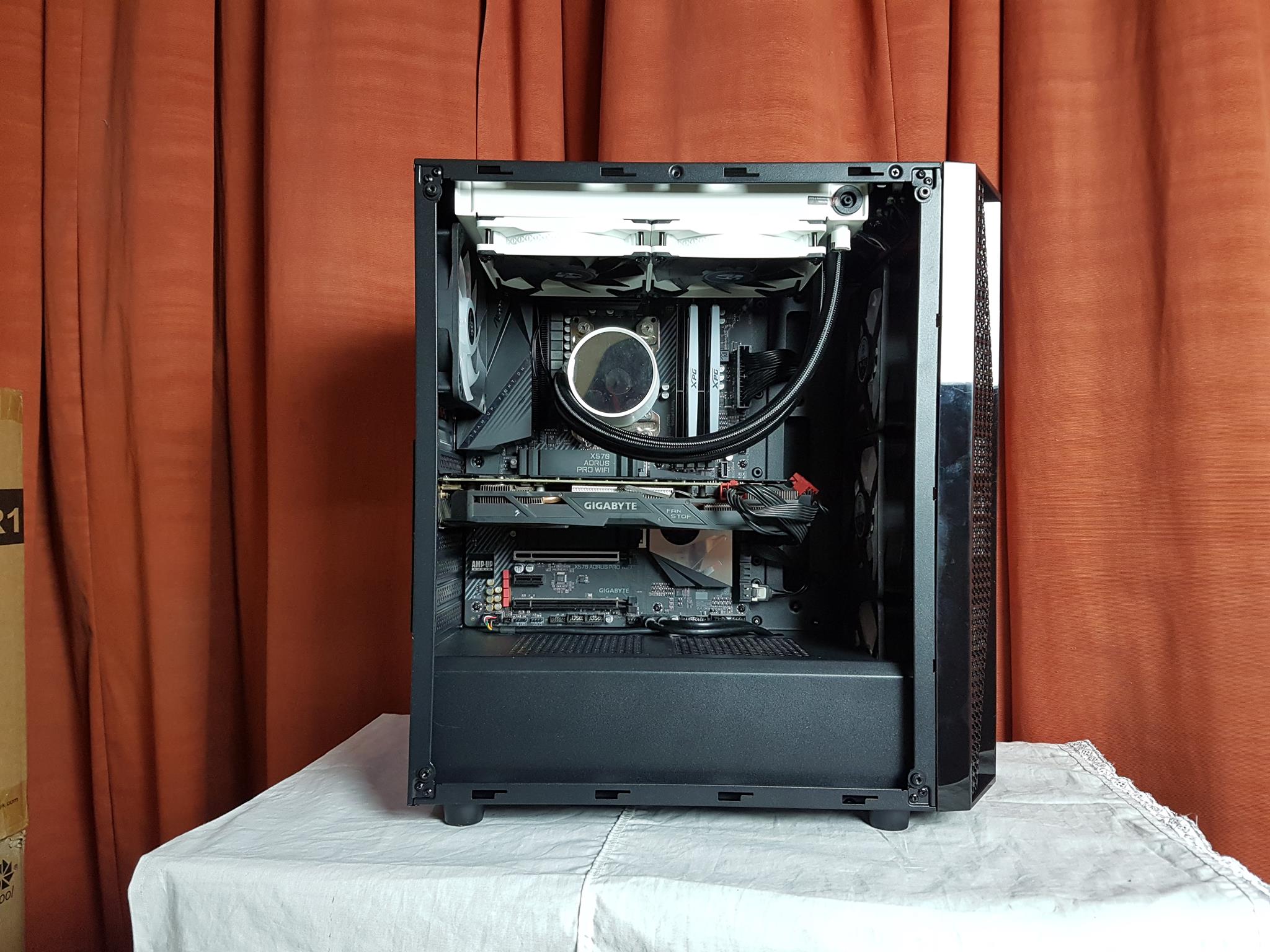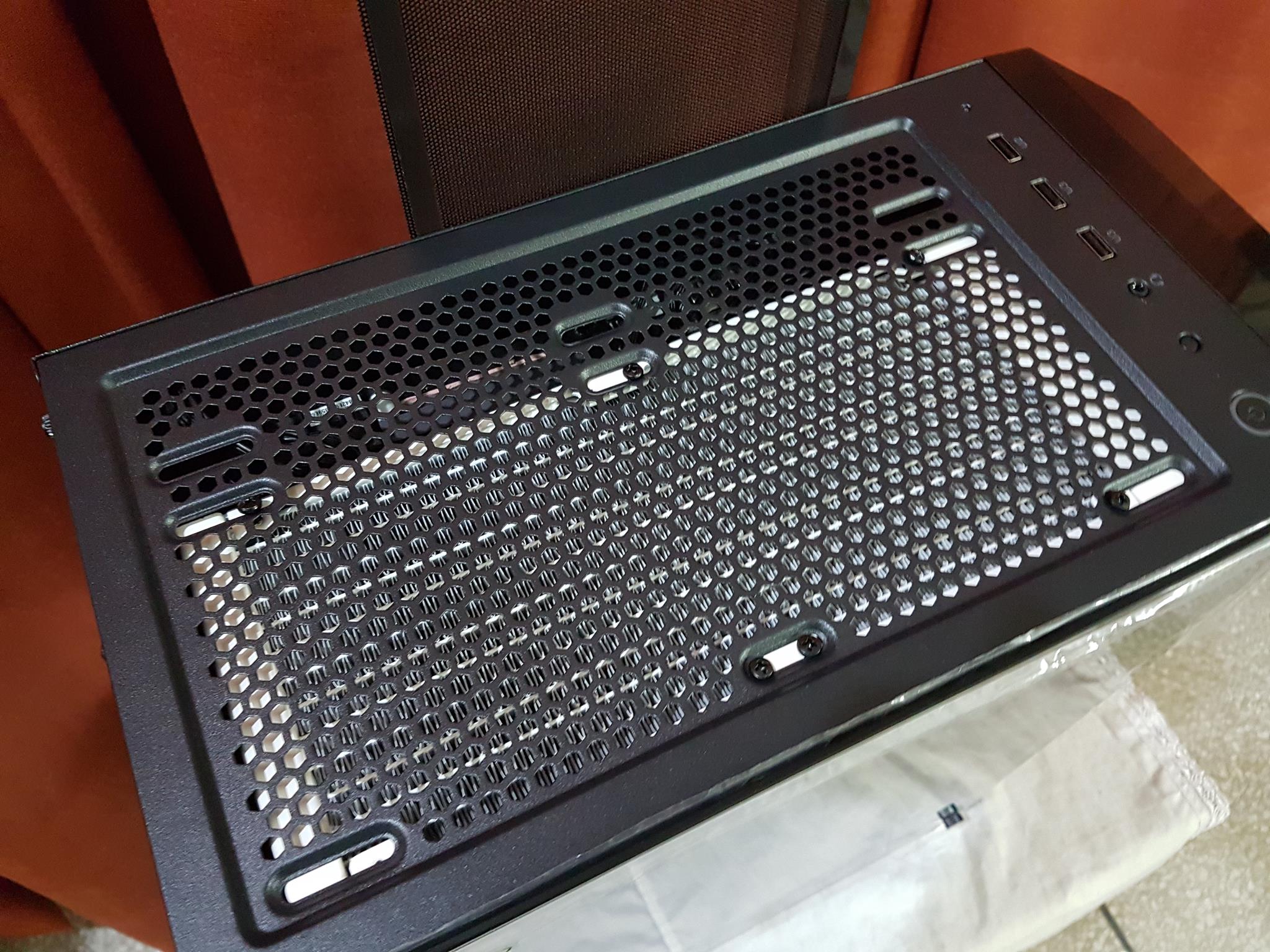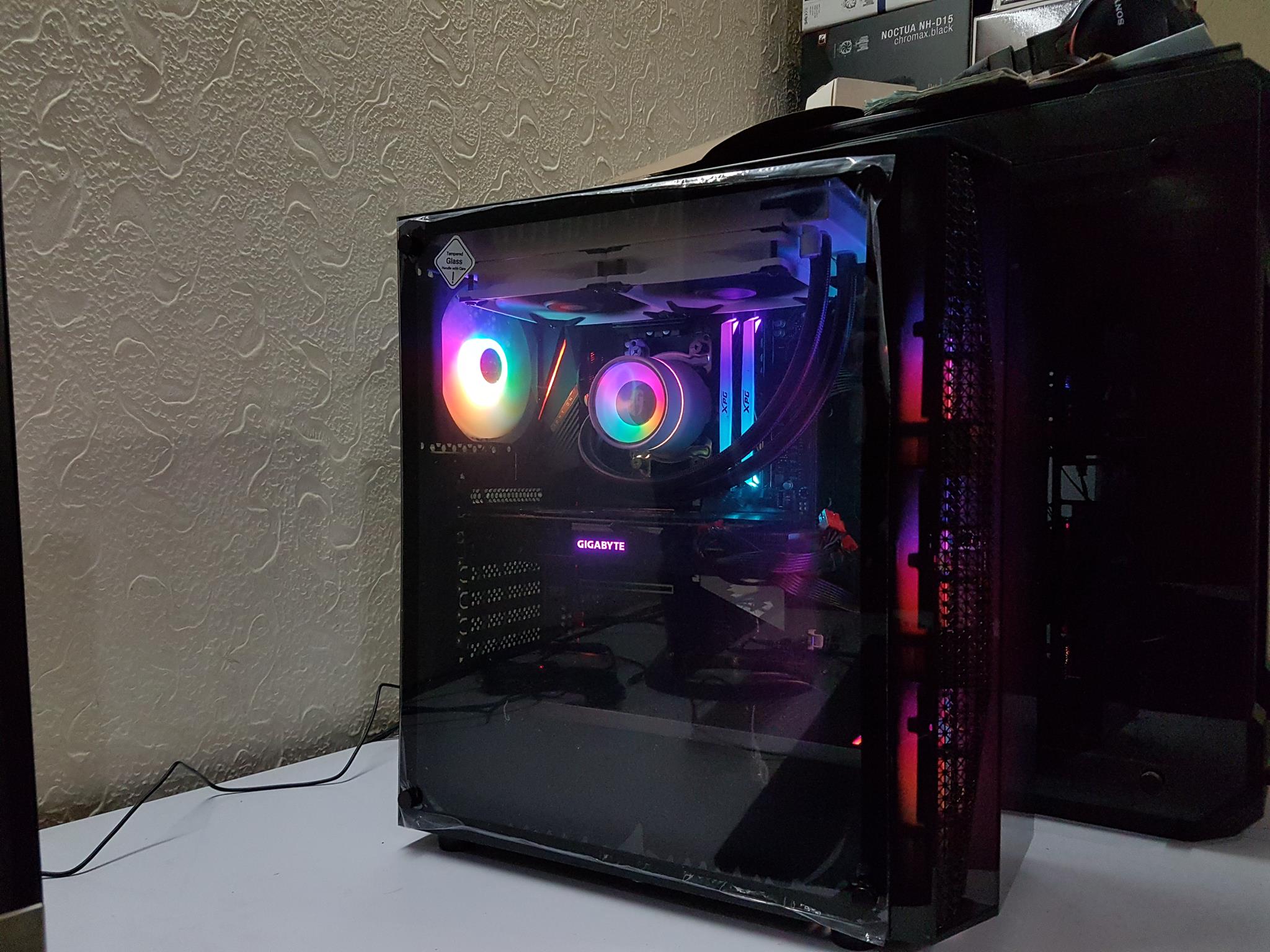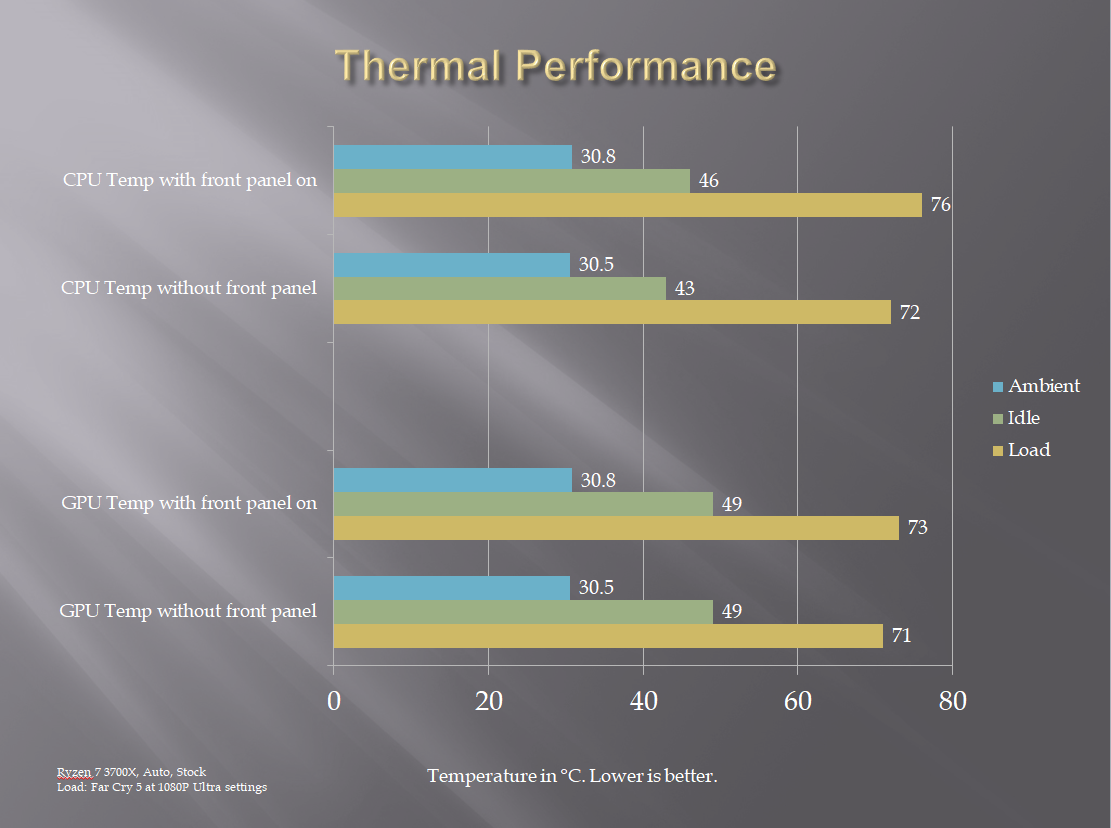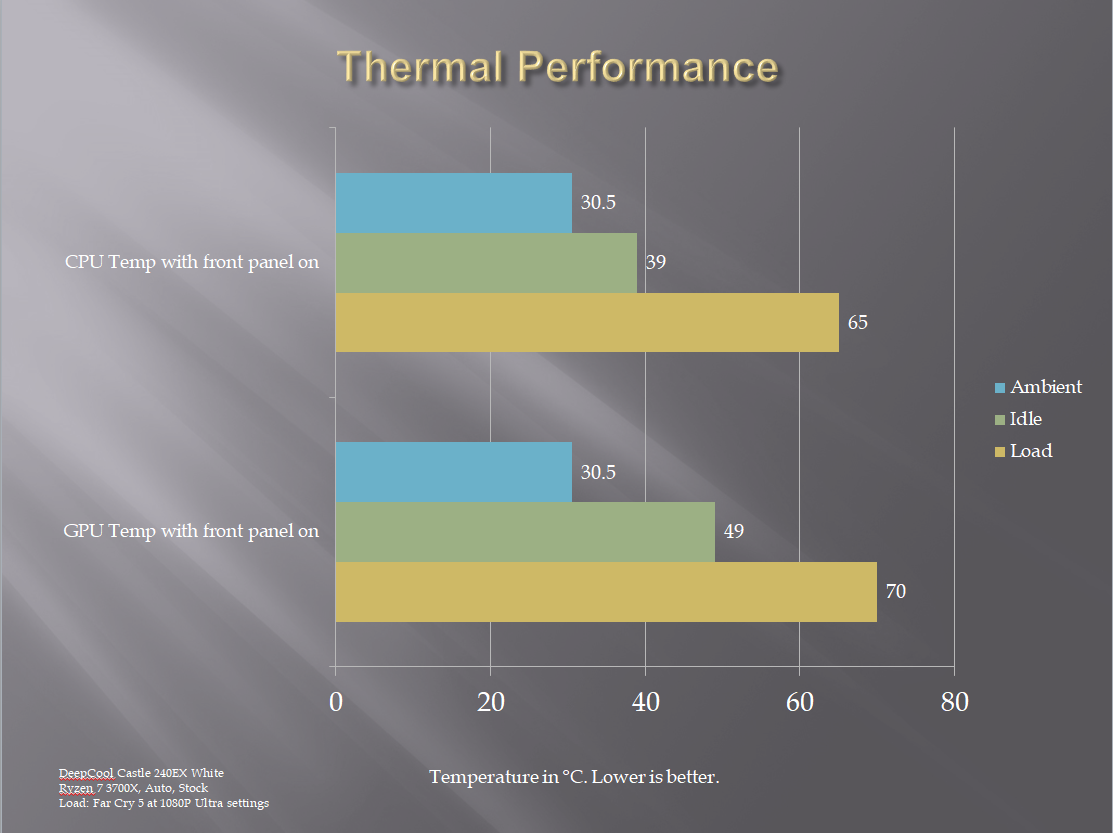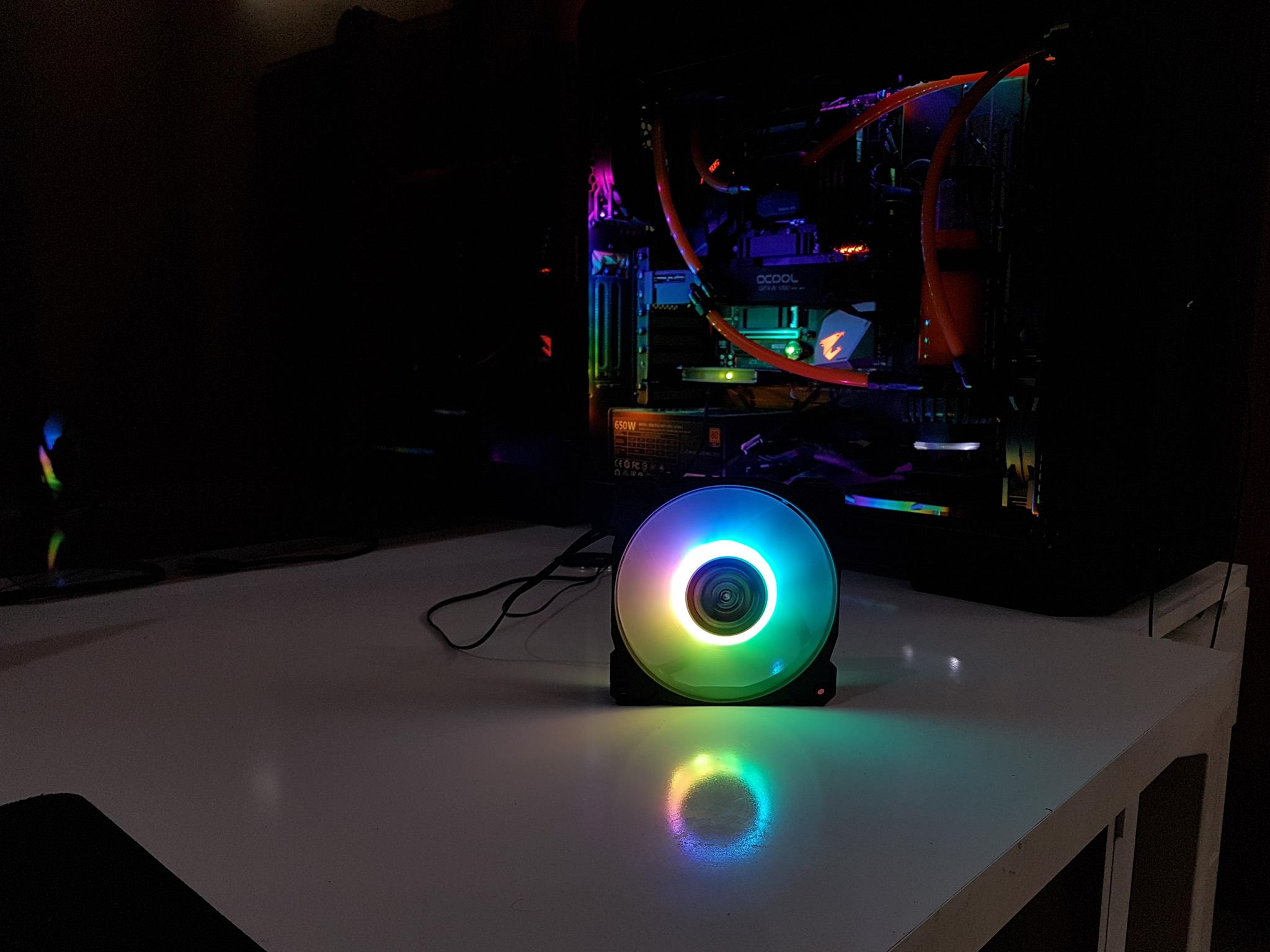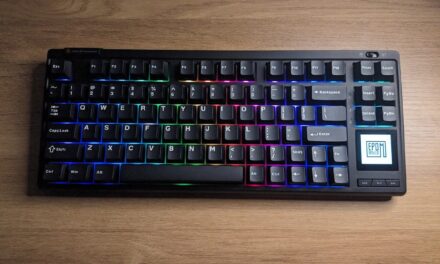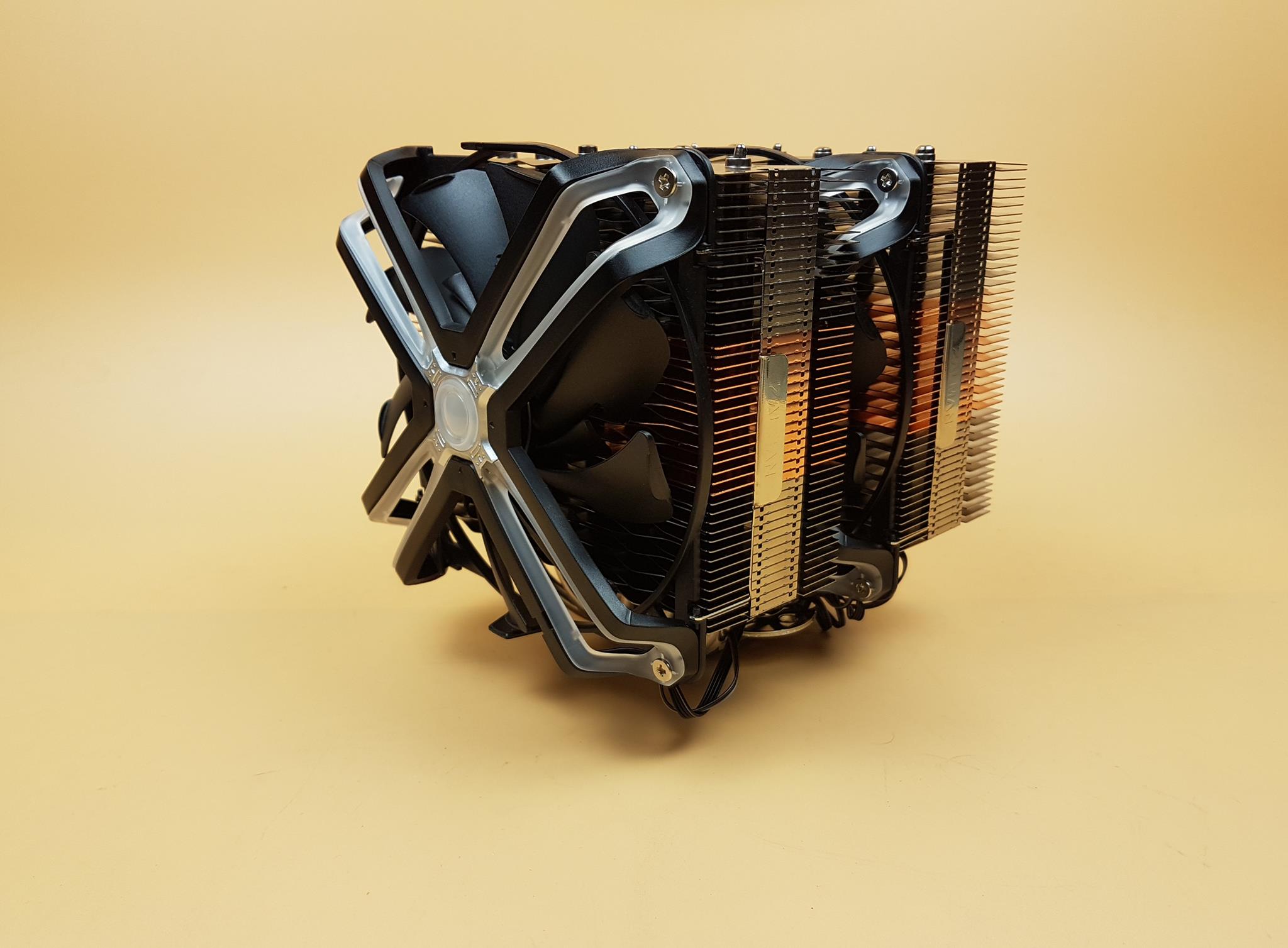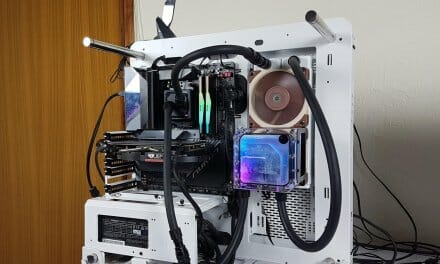
SilverStone FARA B1 Lucid Rainbow Chassis Review
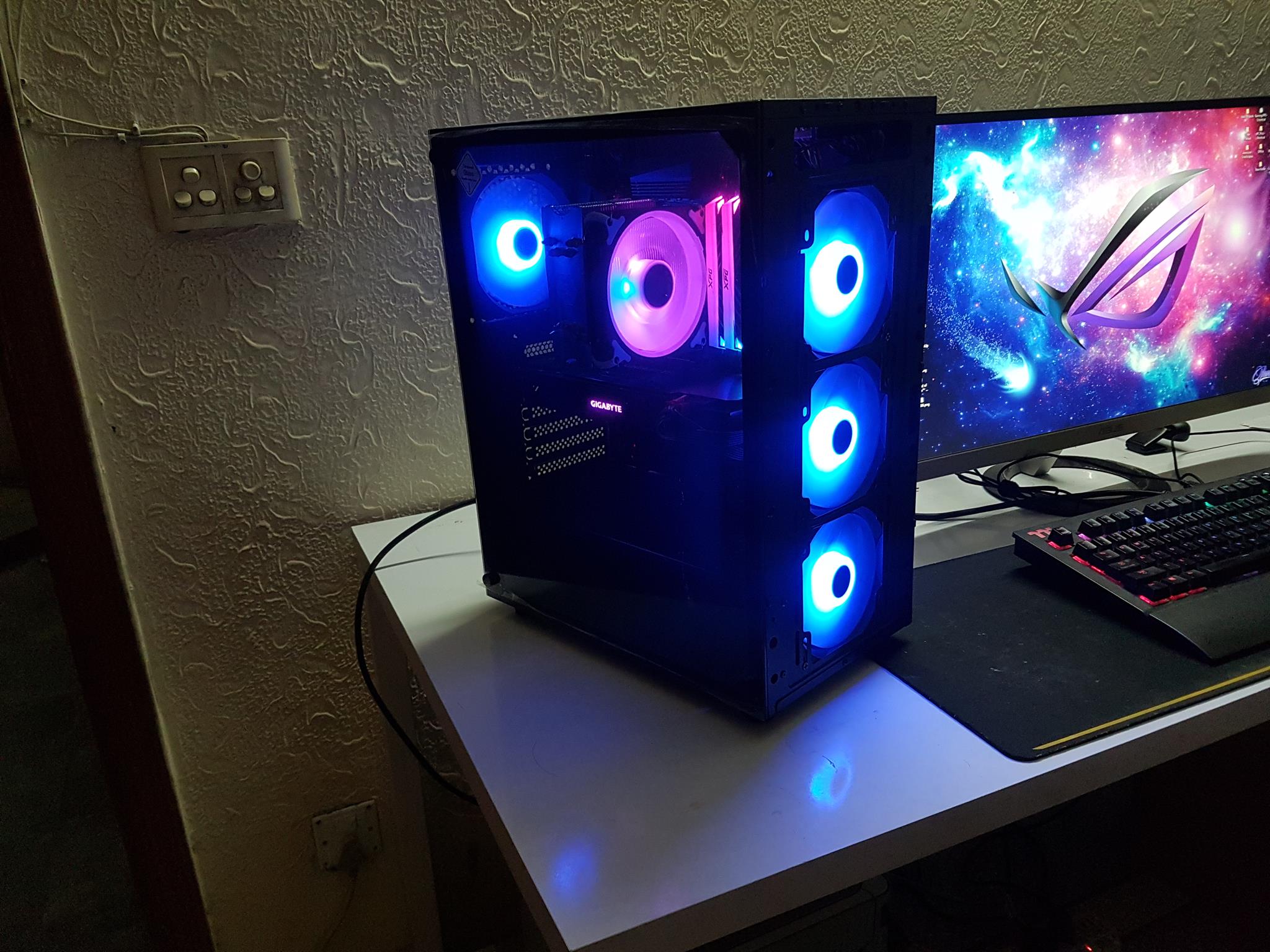
Introduction
SilverStone Technology was founded in 2003 on the principle of recognition that merely having innovative expertise within the industry is not enough. Their objective is to ensure that their expertise is delivered to all products with consistency, in response to user’s needs, and with maximum user satisfaction. SilverStone Technology thrives on the challenges of rapid technological advancements and creating aesthetic standards for the industry. Their products are of high quality. Product lines include PC Chassis, PSU, Cooling Solution, Storage devices, etc.
Recently we have reviewed the FARA R1 white edition from SilverStone. In continuation of the FARA series, SilverStone has sent their newly released FARA B1 Lucid Rainbow for the review. We reached out to SilverStone for some understanding of their chassis naming convention. They are classifying the chassis into multiple series based on price and class levels. FARA is the complete name of the series having a short name of FA. The letter following the series name denotes the underlying feature of the chassis. In FARA B1, FARA is the name of the series whereas B denotes the basic signifying its intended entry-level chassis with styling. R1 in FARA series is continuing the legacy of RL06 with affordable high-performance fame.
The FARA B1 Lucid Rainbow is a stylish compact mid-tower chassis available in black color. The basic structure and tooling are the same as is on the R1 lineup but with a few changes. The prominent change is the high glossy and reflective front panel with stylish mesh sides. The R1 series has mesh front panels. In B1 the air intake is from left and right sides mesh portions of the front panel and through the bottom cutout. The FARA B1 Lucid Rainbow has the same tempered glass panel with the same mounting provision as is on the R1 lineup. The FARA B1 Lucid Rainbow supports standard ATX, microATX, and mini-ITX form factor motherboards. Despite being a compact mid-tower, the provision for cooling gear is quite good. Another striking difference between R1 and B1 Lucid Rainbow is the provision of a total of 4x RGB fans in the FARA B1 Lucid Rainbow. Our observation in R1 was the lacking of front-mounted fans but the price would make up for that. In FARA B1 Lucid Rainbow, the SilverStone has provided 3x 120mm RGB fans on the front and a 120mm RGB fan on the rear. A keynote on this aspect is that the user can’t control the lighting or the speed of these fans. CPU cooler of up to 165mm height can be installed in this chassis and graphics card up to 327mm with front fans. Standard ATX PSU of length 160mm can be installed. Here are some of the features:
- Equipped with four 120mm rainbow fans
- Aggressive air-intake design with a transparent front panel.
- Tempered glass side panel included for displaying your uniquely built system
- Integrated single 3.5mm audio jack supports most mobile earphones or headphones with MIC
- Support multiple cooling options
Product: FARA B1 Lucid Rainbow
Manufacturer: SilverStone Technology
Price: MSRP is $79.99 at the time of the review
Specifications
Dimensions
Packaging and Contents
The chassis is shipped inside a standard brown color cardboard box.
FARA B1 is printed on the front along with the company’s website address. This is minimal information which may not help the user/reader much. But this is how most of the chassis packing boxes are.
Features of the chassis are printed here along with the minimal specifications. Serial no and model no are printed on a white color sticker along with the weight of the package. In order for the user to know more details about the chassis, full specifications are uploaded on their website.
Opening the box will show the chassis wrapped inside a transparent sheet and tucked between two white color Styrofoam pads.
Accessories
The SilverStone has provided:
- Standoffs
- Standoff socket wrench
- Various Screws
- Zip ties
- 1x Warranty Guide
There is no user manual included in the chassis which in my opinion should have been provided. Users can download the manual from their website. The downloaded manual is elaboratively taking the user step by step towards building inside the chassis and showing compatibility/clearance aspects pictorially.
Closer Look
It is time to take a closer look at the chassis and see what it offers in this price range. The dimension of the chassis is 207x446x401mm (WxHxD). SilverStone has increased the depth of B1 lineup chassis as compared to the R1 lineup giving better clearance for the graphics card length. Chassis is made of steel, plastic, and tempered glass. The net weight of the chassis is 5.75KG. In terms of volume, this chassis has 37 Liters of space.
Exterior View
Let’s start with an exterior view of the chassis.
The front panel is what differentiates the R1 from the B1 lineup in the FARA series. There is a tinted black color glossy Plexi panel which is a fingerprint magnet. The panel has meshed/vented portions on the left and right sides in quite a style that speaks for itself.
The meshed sides have top and bottom portions in an inset design as compared to the middle portion and this design sits in harmony with the overall layout of the front panel. The mesh portions are sandwiched between the glossy portions of the panel. We will see in our thermal testing how effective these mesh portions are. The glossy transparent portion will come to life from the lighting of the fans.
Looking closely at the mesh sides, we can see the dust filter on the inner side. SilverStone has done a good job here.
Looking at the side panel, we have a light tinted tempered glass panel. The borders of the panel are finished in black color. The protective sheet on the tempered glass has a Tempered Glass, Handle with care sticker pasted. We can see 4x black color screw covers on each corner of the glass panel which are used to install the panel on the structure. Place one hand on the panel while installing/removing as there is no catching mechanism to avoid the fall of the panel. As soon as all four screws are removed the panel will come off. We saw no difference here between the R1 and B1 lineup.
The rear side of the chassis has a standard layout. Up top, we have a cutout for the motherboard rear I/O plate followed by the mesh designed 120mm fan place. The good thing is the user can adjust the height of the rear 120mm fan in 5 positions. In the middle section, we have 7 PCIe slot covers. The first two are reusable whereas the rest of them are not reusable as they pushed-out design. This seems to be a cost-saving aspect much like what we saw on R1. The good point is the top two slots have reusable covers so that would come handy in case of a single graphics card use scenario.
Since the head sides of the PCIe slot covers are on the exterior, there is a cover plate that is secured using a non-captive thumb screw. The benefit of this design is that the PCIe slot covers sit in the plane with the chassis surface. At the bottom, we have a provision for a standard ATX PSU. The solid steel side panel is secured using two thumbscrews which are not captive.
The other side of the chassis has a solid steel panel.
The top side is where we are finding another difference between the R1 and B1 lineup. We observed that the I/O panel was cabled to the front panel on the R1 lineup and this makes handling the front panel challenging. They have taken the I/O panel on the top side of the B1 lineup. The top side of the chassis has a magnetic color dust filter. This filter has a black color magnetic belt on the inner side.
Removing the magnetic dust filter, we can see the vented design on the top. The user can install 2x 120mm fans or 2x 140mm fans on the top. The user can install a 120/240mm radiator on the top but with limitation with respect to the RAM height.
Following connectivity options are provided on the I/O panel:
- A Power button
- A Reset button
- An LED Indicator
- 2x USB 3.0 ports mentioned as U3
- 1x USB 2.0 port mentioned as U2
- Integrated microphone/audio jack
On the bottom side of the FARA B1, we have a non-magnetic removable dust filter on the PSU mount. There is a cutout on the bottom section of the front panel. This is where one has to grab the front panel and pull it over to take it out.
We have 4 black color feet on the corners of the chassis giving it enough height from the surface.
Interior View
It is about time to take a peek at the inner side of the chassis. Let’s start with the front side.
The front panel can be removed by grabbing it from the base and pulling out. We have rail mounts for 120mm and 140mm fans on the front side. The fan support is:
- Up to 3x 120mm fans [Pre-installed]
- Up to 2x 140mm fans
The radiator support is:
- A 120mm radiator
- A 240mm radiator
- A 140mm radiator
- A 280mm radiator
There are two cutouts on the right side from where the cables can be passed through.
SilverStone has pre-installed 3x 120mm Rainbow fans. These fans only have Molex connectors attached to the power cable. The user can’t change the lighting mode not regulate the speed of these fans. The lighting modes are pre-programmed. Hence, they are using the terminology of Rainbow not RGB. Lucid word in the model name is coming from the front panel.
Looking at the inner side of the front panel, we can observe that the dust filters are clipped to the mesh sides. Since the air can be intake from the bottom side, that portion is left un-guarded from the dust.
The inner side of the chassis is almost the same as is on the R1 lineup. One thing is the tooling on the top and bottom sides of the chassis. Note the cutouts which are there for the steel side panel. Seems like they are using the same tooling regardless of the panel type. Maybe a cost-saving factor! There is a close resemblance between the motherboard standoffs and the 4x mounting corner sockets on to which the glass panel is secured. We have a vented PSU shroud.
The total height of the inner side is 330mm whereas the length is 347mm. Taking a closer look at the motherboard tray, we have three cutouts on the top. There is a large size CPU cutout for ease of cooler’s installation. 6x black color standoffs are pre-installed. 3x more are to be installed by the user. They are provided in the accessories and a socket wrench is also provided for their convenient installation. Each mounting hole is labeled IAM where I stand for mini-ITX, A stands for standard ATX, and M stands for microATX. Naming nomenclature is also printed below the CPU cutout area. There are 6 cutouts on the right side of the motherboard tray. They are in the shape of a 3×2 array with three rows each with 2 columns. There are no rubber grommets. This is another cost-saving step. There is no flex in the tray. The build quality and the paint job are well done. The distance from the top of the motherboard to the top of the chassis is approximately 28mm or so. The displacement from the top is roughly 24mm so there is that when it comes to supporting the RAM with AIO up top. The maximum height of the CPU cooler is 165mm. SilverStone has mentioned in the user manual that the cooler should not protrude 20mm above the motherboard tray.
There is a 120mm Rainbow fan on the rear. It has a white translucent blade for even light diffusion.
The PCIe slot covers are not fully flushed on the chassis surface. As can be seen, the first two covers are reusable while the rest are not. In my opinion, the top three slot covers should be reusable or second and third should be reusable if all can’t be made reusable. The rationale behind my opinion is that many of these days’ motherboards have first PCIe slot of X1 speed for add-on cards. The second slot is X16 one for the graphics card.
The gap between the front-mounted rail and the PSU shroud is just 28mm approximately. Since the fans and radiators are supposed to be installed on the same side, a 360mm radiator with all three fans is not possible. Also, adding a radiator and fan would reduce the space available for the graphics card. For example, if we install an AIO having a 27mm thick radiator with 25mm thick fans then they would take roughly 52mm of the space on the front. As per the specifications, a graphics card of length 327mm can be installed with the front fan. With front-mounted AIO this allowed length reduces to 295mm. without front fans, the permissible graphics card length is 350mm approximately.
Another difference between the R1 and B1 series is the PSU shroud. In R1 we saw two 2.5” SSD brackets. We also observed that PSU fully flushes with the top of the shroud and leaves no room to take the SATA cables out from the corresponding cutouts on the shroud. SilverStone has removed the brackets from the shroud in B1 lineup and provided two brackets on the backside of the motherboard tray. We have 3x cutouts placed in front of the motherboard tray.
Taking a closer look, one can sport mounting holes for the fans on the shroud giving the impression that the user can install 2x 120mm fans on the shroud for airflow. The fan mount facing the PSU will not serve any purpose as flushed PSU will not leave any breathing room. The fan mount towards the front of the chassis may work for air intake provided HDD cage is not used and can be used for air intake for the graphics card. There is no mentioning of these mounts in the specifications.
Now, it is time to take a look at the backside of the motherboard tray area. We are finding the same 4 holed raised design as was in the FARA R1 f. This is quite an innovative and smart move by the SilverStone as it allows for a multi-direction cable tie point. There are a total of 12x cable tie points which are plenty. There are two 2.5” SSD brackets on the backside of the motherboard tray with captive thumbscrews. The dual-chamber design is obvious from this angle.
The bottom chamber has an HDD cage and PSU mounting area. The user can install only 1x 3.5” HDD in the FARA R1. The top of the cage has a mounting provision for another 2.5” SSD. In terms of storage, the following provision is made in FARA B1 Lucid Rainbow:
- 4x 2.5” SSD
- 1x 3.5” HDD
This is kinda disappointing to see that FARA B1 Lucid Rainbow is offering only 1x 3.5” drive provision.
There is no caddy in the cage and the user is required to screw the 3.5” drive.
A provision for a 2.5” SSD bracket can be seen on the HDD cage.
SilverStone has recommended a PSU of length 160mm with the HDD cage. The total length from the right side of the HDD cage towards the end is 185mm approximately. There is not enough room and this will make it further challenging if non-modular PSU is used. If we remove HDD cage then there is approximately 350mm of space for the PSU and the cables.
The front panel cables include USB 3.0, USB 2.0, HD Audio, and front panel connector cables. The cables are in black color. Surprisingly, the length of the front panel connectors is reduced as compared to the R1 lineup.
Installation
Basic installation particularly with an air cooler is simple and straight forward. Before going further, here is the list of the test build that I have used in this chassis:
- AMD Ryzen 7 3700X
- X570 AORUS Pro WiFi
- ADATA XPG Spectrix D41 2x8GB @ 2666MHz
- HyperX 120GB SSD for OS Drive
- SilverStone AR12-RGB Cooler
- GIGABYTE GeForce GTX 1060 Gaming G1 6G
- Thermaltake TP 750G RGB PSU
The installation started with 3 leftover standoffs. The standard ATX size motherboards have a dimension of 12×9.6inch (30.5×24.4cm). From our own practical, the user can install an E-ATX size motherboard as the design and layout of the chassis itself does not hinder the user installing EATX size motherboard. But it has considerations of its own with respect to the AIO on the front side.
Next, the motherboard was installed. I had installed the CPU and RAM out of the chassis. So the complete assembly went inside in a single go. Next, I connected the EPS connector to the motherboard and routed the cable through the top-left most cutout towards the backside of the motherboard tray.
In the next step, I installed the PSU. Since the PSU is modular, I had to deal with 5x cables which were 24-pin ATX, EPS, PEG, SATA and Molex. In case you are wondering about why Molex, it is because the pre-installed 4x fans have Molex connectors. Good thing is that these Molex have one end using a male connector and the other end using a female connector. This allows the user to daisy chain theses connectors. By the way, who would use Molex these days when SATA can do the same job! Anyhow, I digress. Coming back to the installation, the graphics card was installed. The SSD was installed on the bracket located on the backside of the motherboard tray. Next up was the cables routing and management. There is roughly 15mm of space on the sides at the back. Since there was no HDD cage, handling the cables was an easier task.
The front panel’s system cables are cut to size as they can only reach the motherboard’s system panel connector through the rightmost cutout on the shroud. As PSU is again almost 95% flushing with the top of the shroud, it leaves no space for the left-most cutout on the shroud and almost blocks the middle cutout. Keep that in mind when routing the HD Audio and USB cables.
After completing testing with the air cooler, we put in the Deepcool Castle 240EX White cooler up top. It was a tight fit but the RAM was not obstructing the cooler unlike what we saw in the FARA R1 white edition. But the motherboard’s I/O panel’s shroud was giving it a tough time. In total, we were able to install the radiator using 4x screws and a bit tilted.
RGB Lighting
The Rainbow fans have been pre-programmed to run the programmed lighting modes automatically. There is no way that the user can change the lighting modes or the brightness/speed of the dynamic modes. The lighting diffusion is even and bright even as it is not done overly. Here are some pictures.
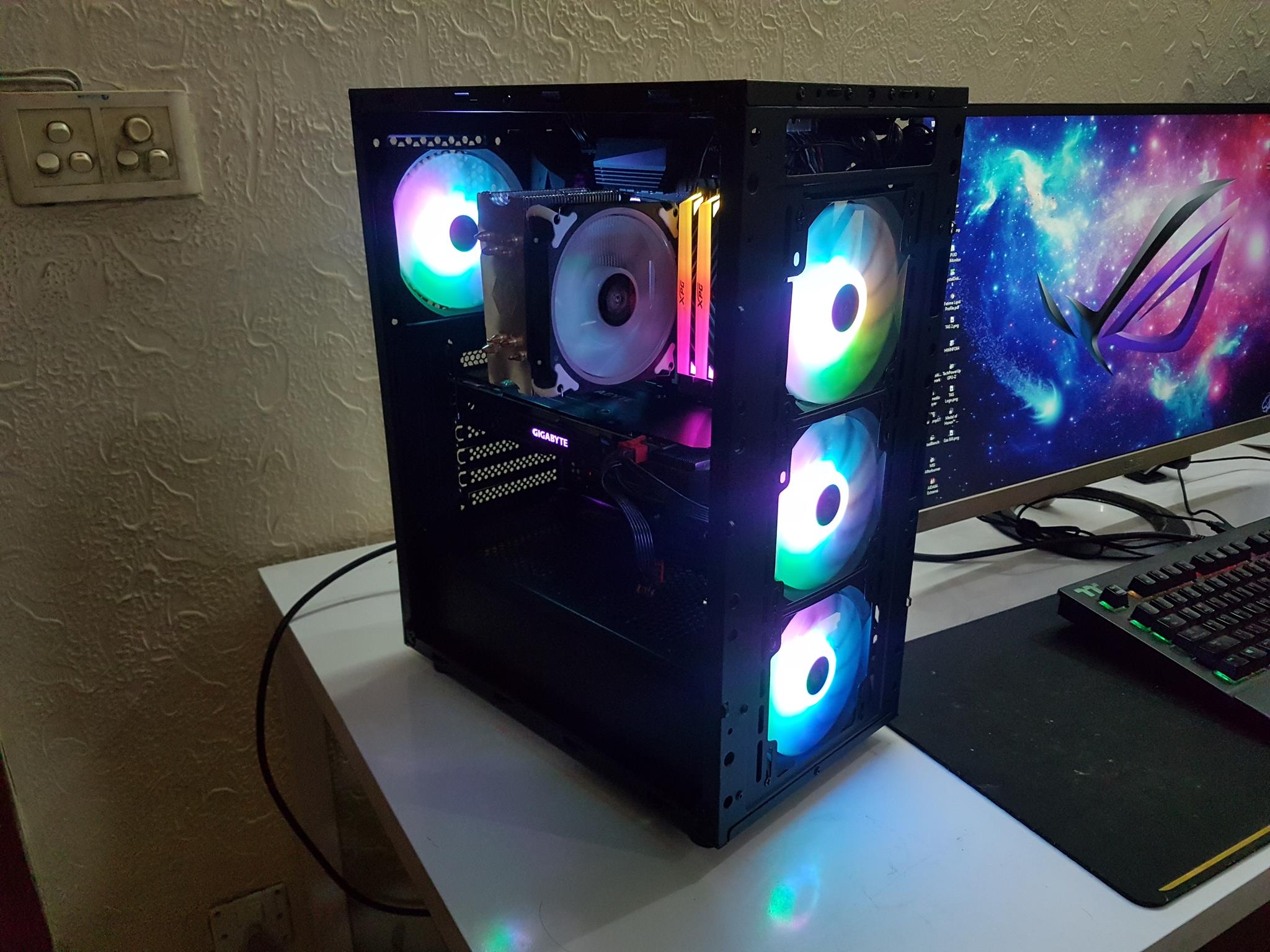
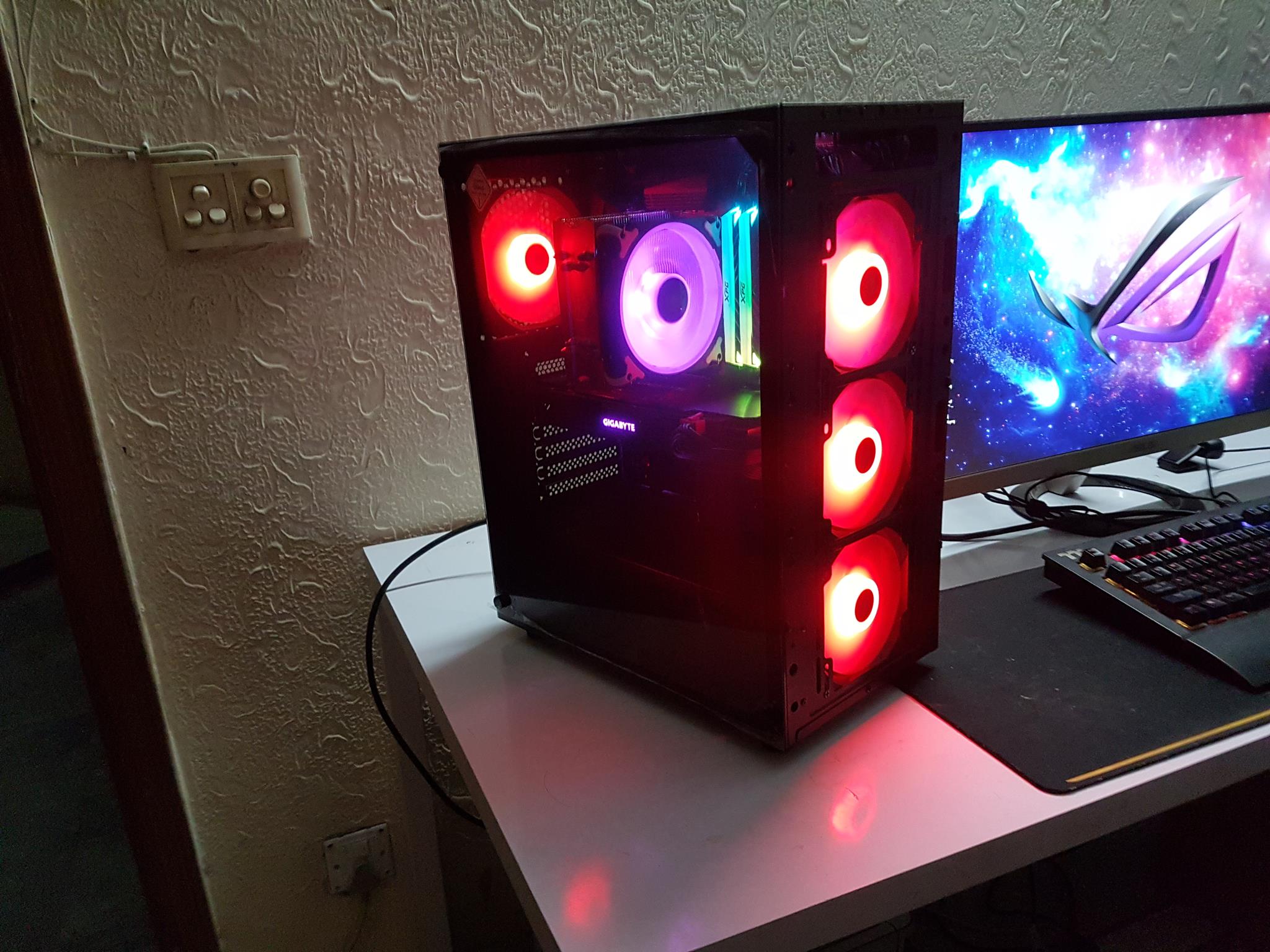

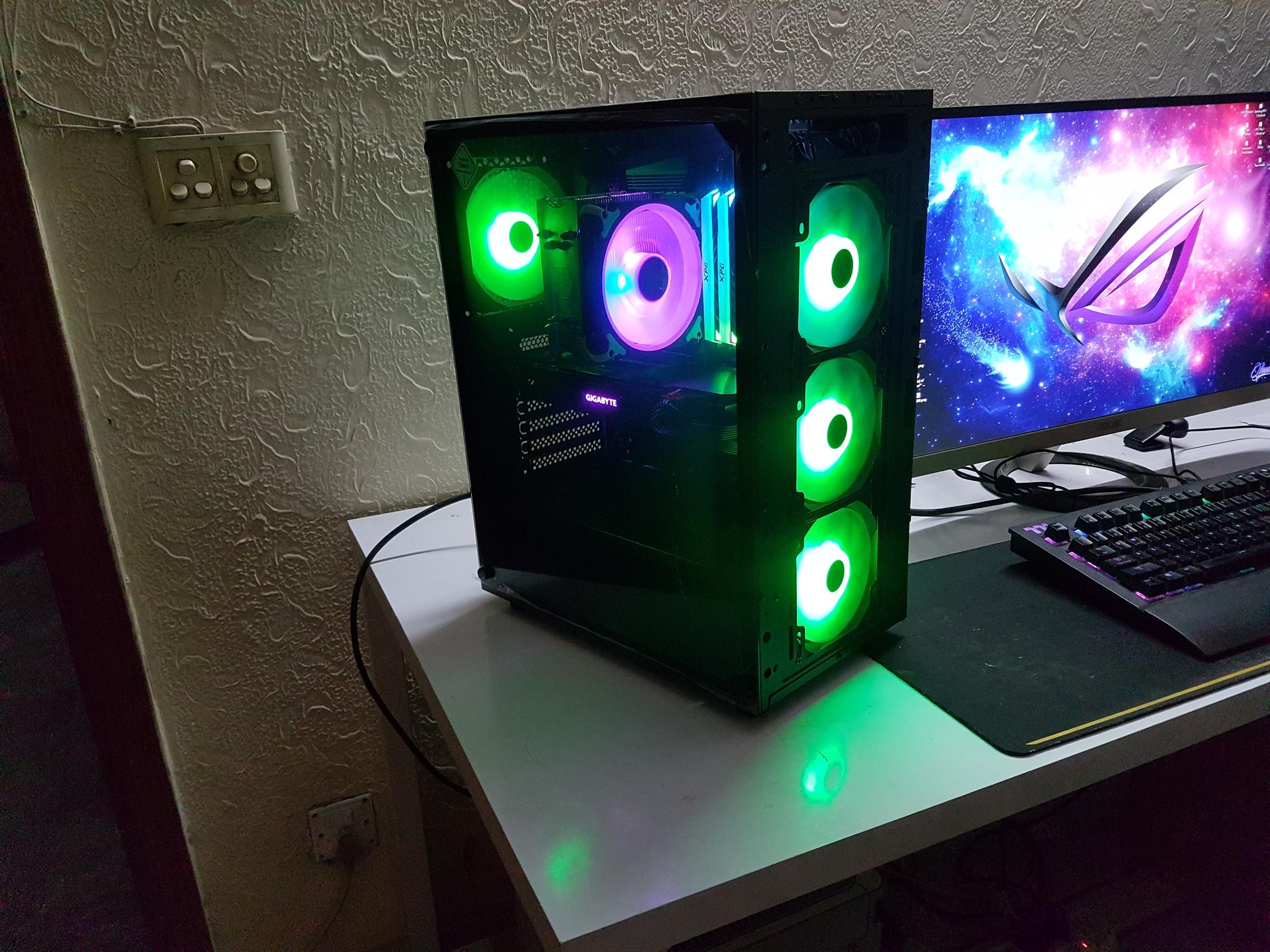
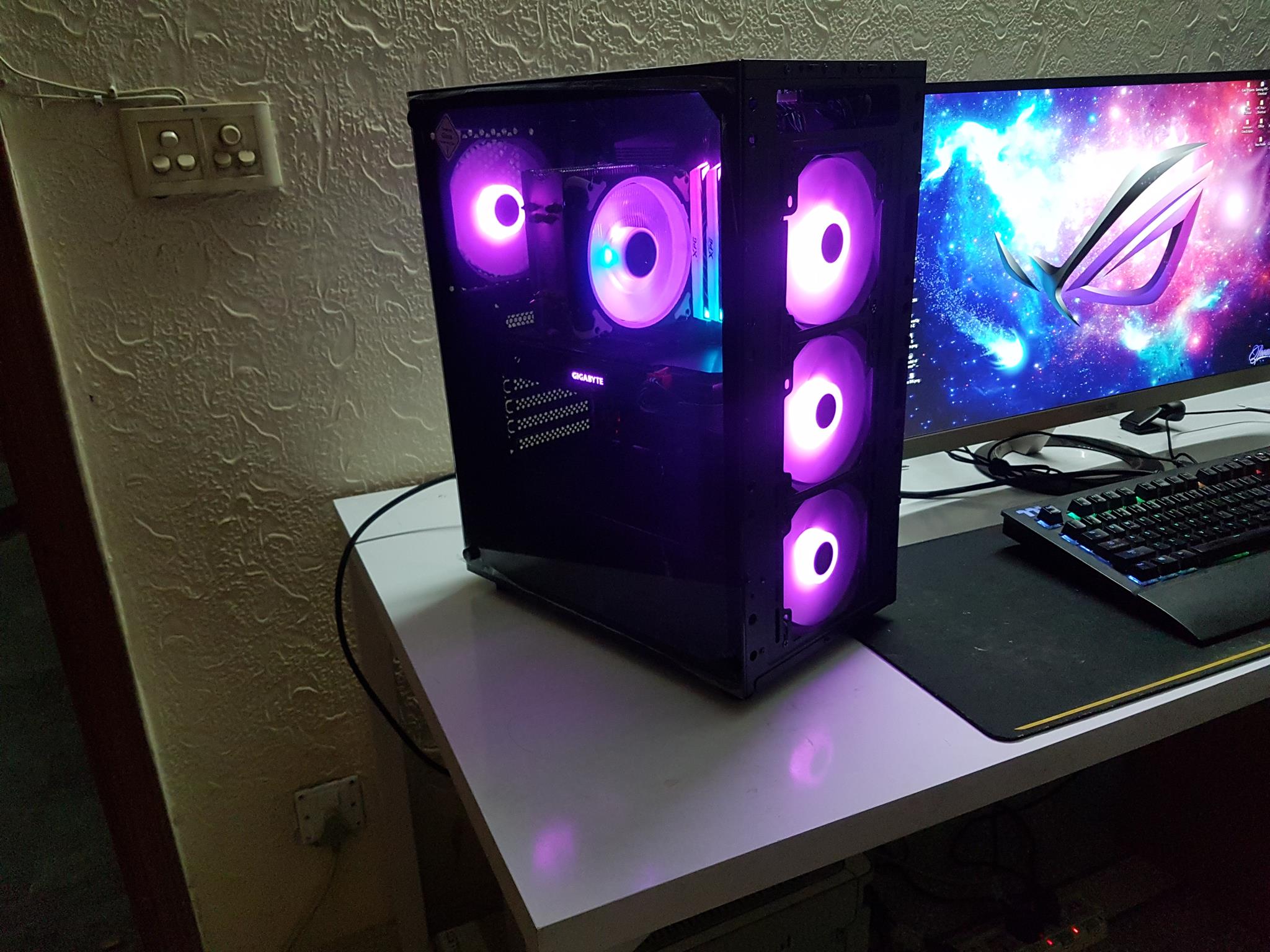
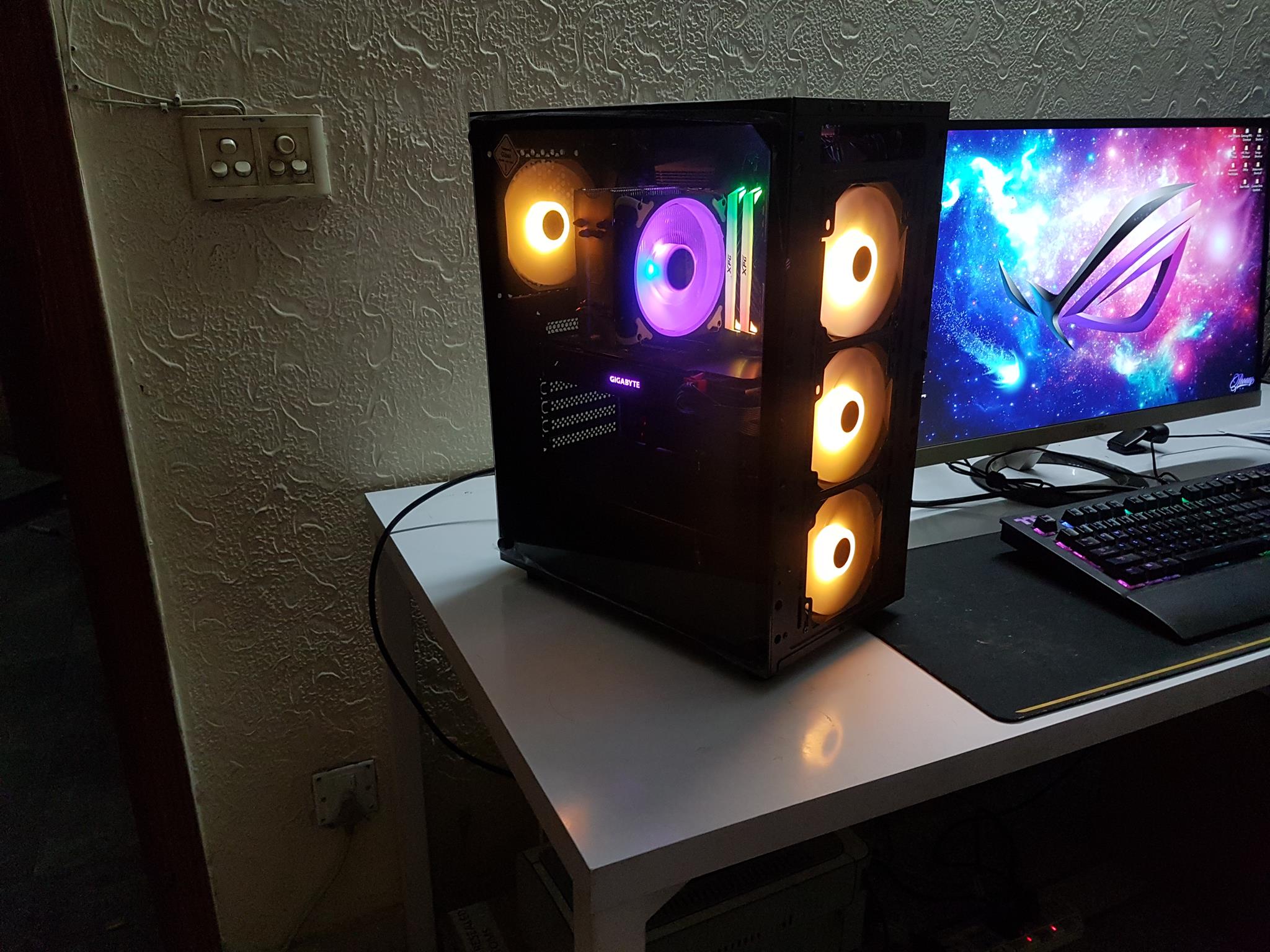
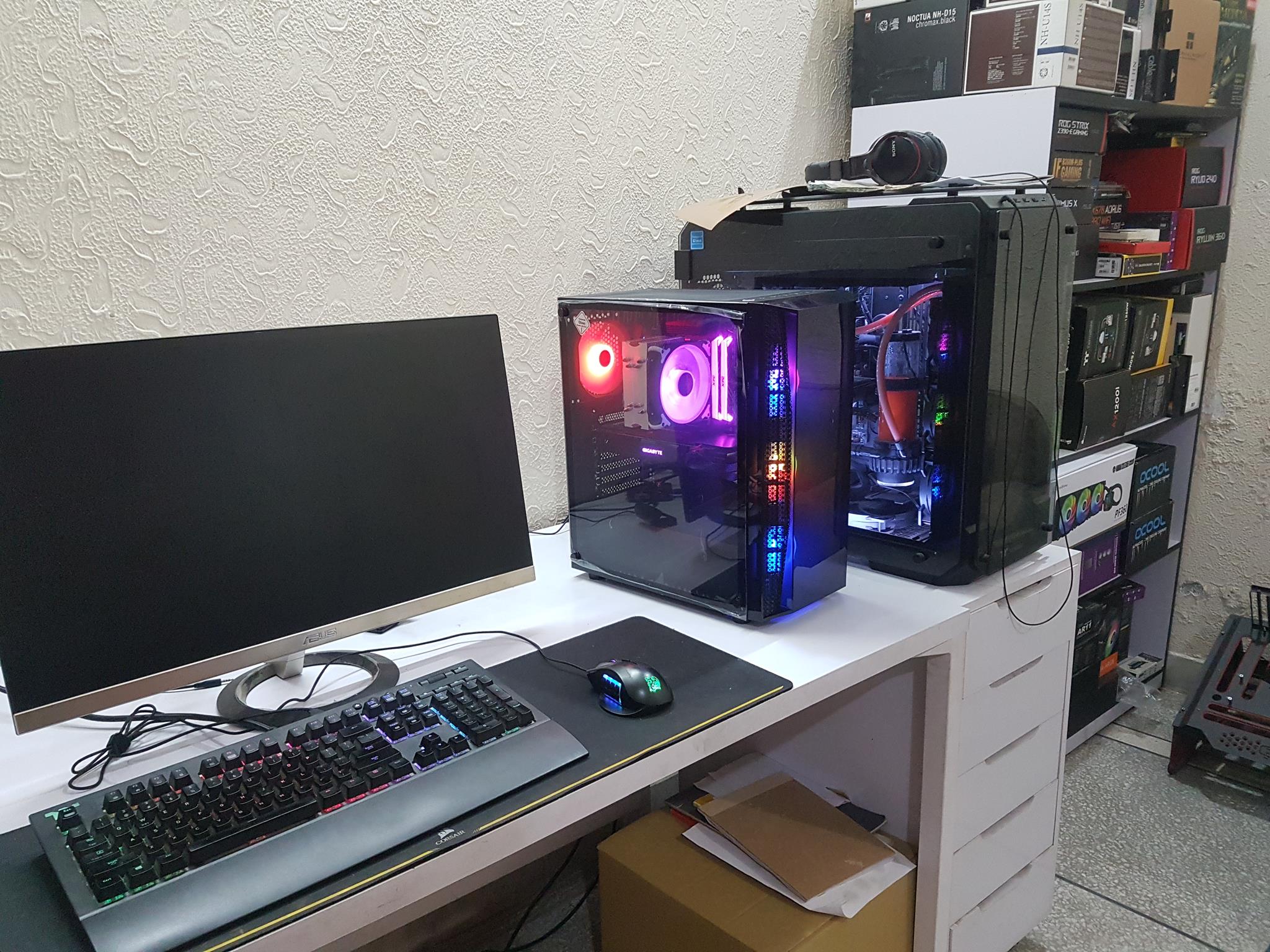
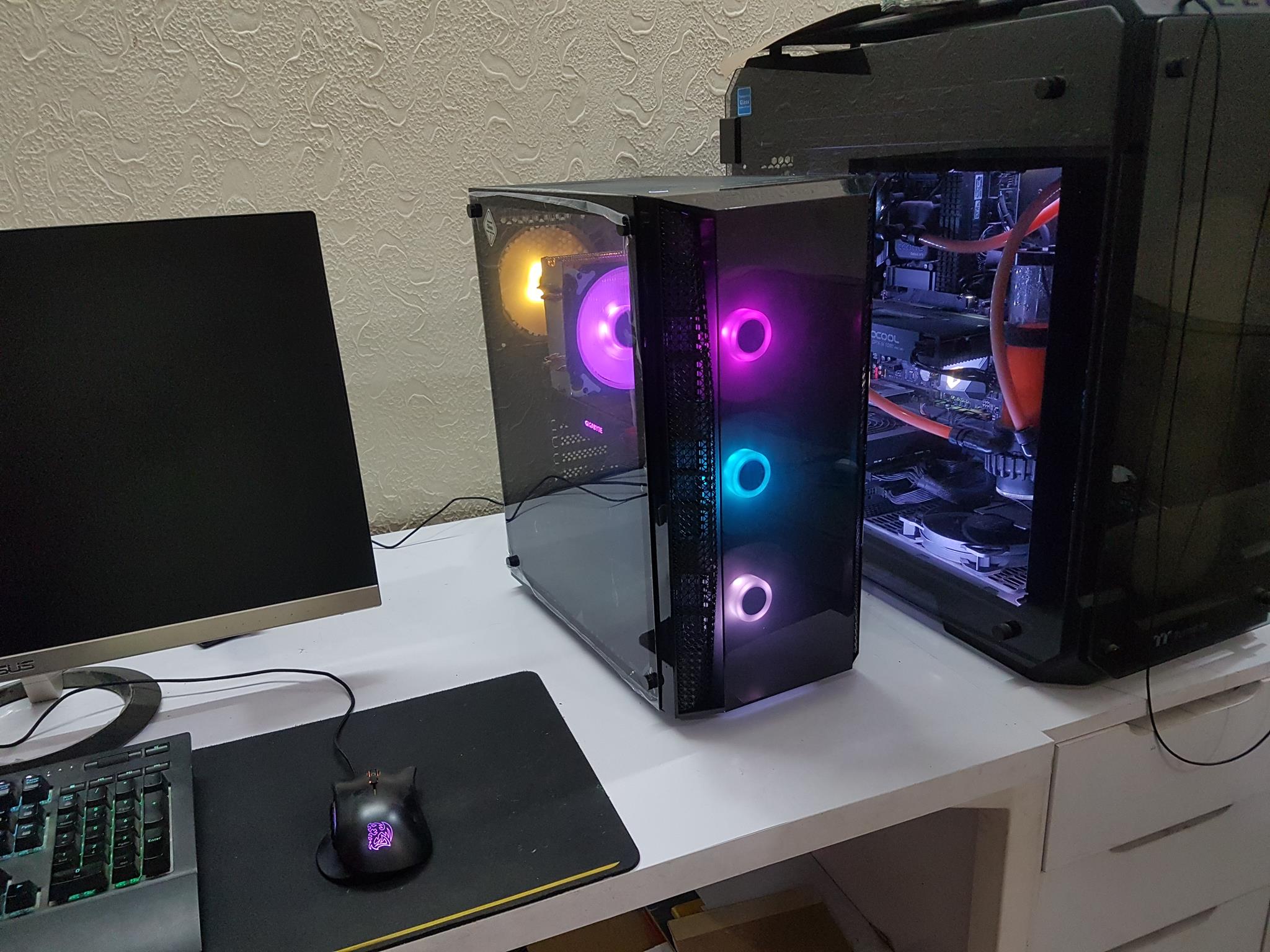
Testing
Following configurations were used to test the thermal performance:
- Thermal testing with front panel installed
- Thermal testing with the front panel removed
Since fans are pre-installed as compared to the FARA R1, we are only testing two configurations to check the impact of front translucent panel with limited air intake provision on the sides.
Each testing session was of 30 minutes of gameplay using Far Cry 5 at 1080P and Ultra settings. I will report the Package temperature on the graph. The maximum temperature of the graphics card is reported in the graph. Between the testing sessions, the system was put to idle for a minimum of 15 minutes.
The cooler’s fan was set to run at 100% PWM duty cycle. There is no control for speed regulation of the pre-installed fans so I am not sure what speed they were operating.
Result
In stock configuration, the maximum temperature hit by the CPU was 76°C under gaming load and we saw no down clocks on Auto settings. The graphics card hit 73°C. In the next step, we removed the front panel and repeated the test. This time the CPU was hitting 72°C and the graphics card was hitting 71°C. The overall temperature difference is inside the tolerance level.
We have also tested the chassis using an AIO (DeepCool Castle 240EX White).
The temperatures have improved overall.
Conclusion
After spinning the FARA R1 white edition recently, SilverStone sent their newly released FARA B1 Lucid Rainbow chassis as well for the review. SST-FAB1B-LDRB is the exact model number of the chassis that we are reviewing. It is a compact mid-tower chassis and comes in black color. The dimension of the chassis is 207x446x401mm (WxHxD). Chassis is made of steel, plastic, and tempered glass. The net weight of the chassis is 5.75KG. The SilverStone FARA B1 Lucid Rainbow supports mini-ITX, microATX, and standard ATX (12×9.6inch) size motherboards.
Cooling Provision:
- Up to 3x 120mm or 2x 140mm fans on the front with up to 280mm radiator
- Up to 2x 120/140mm fans on the top with up to 240mm radiator
- 1x 120mm fan on the rear
Clearance:
- Up to 165mm height for the CPU cooler
- Up to 322mm length for the graphics card
- Up to 160mm length for the Standard ATX PSU
Storage:
- 1x 3.5″ HDD
- 4x 2.5″ SSD
The front panel is quite a design on its own. It is translucent in almost a black color to give a cool AURA effect with the Rainbow fans light up. The left and right sides of the panel are mesh and bear a curve design which sits perfectly with the overall layout. The mesh sides have a dust filter clipped on the inner side of the panel. The top panel has a magnetic dust filter. The I/O panel is located on the top as compared to the front-mounted on the FARA R1. The PSU shroud has a vented top. The glass panel is light-tinted. Be careful while handling the glass panel as there is no protection from the chassis itself. The PSU mounting area has a removable, non-magnetic dust filter.
SilverStone has provided 4x 120mm Rainbow fans in their FARA B1 Lucid Rainbow chassis. We can’t control the lighting nor the speed of the fans. The lighting effects are pre-programmed and they will continuously cycle through pre-programmed modes. These fans use Molex connectors which can be daisy-chained which is a wise implementation.
The airflow is a bit restricted but it is within the acceptable tolerance. This restriction is removed with a liquid cooler. Once again, we observe the good build quality which is the hallmark of the SilverStone. The competition is getting tough in the USD 79.99 priced segment. The SilverStone FARA B1 Lucid Rainbow offers a nice set of features in this price range particularly with 4x pre-installed Rainbow fans, a translucent front panel for a pleasant aura, gives a compelling case for this chassis and comes recommended by us.
We are thankful to the SilverStone for giving us the opportunity to review SST-FAB1B-LDRB.
















